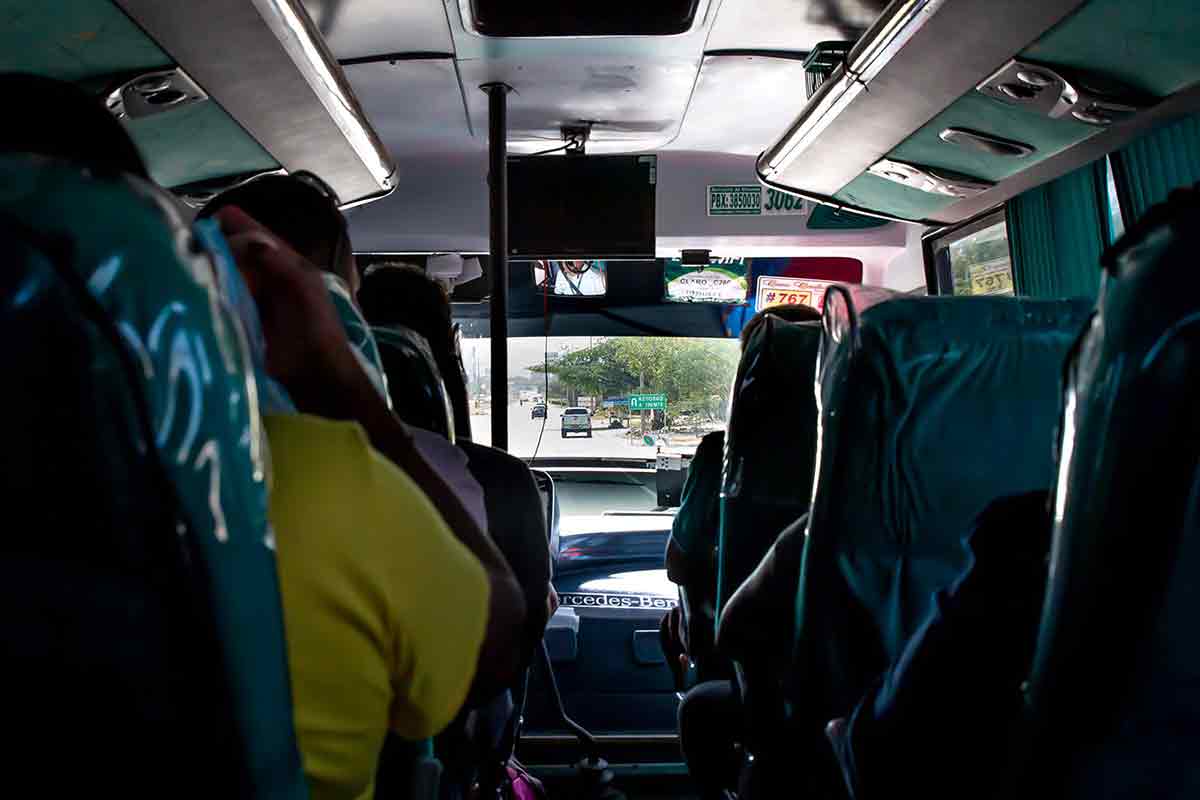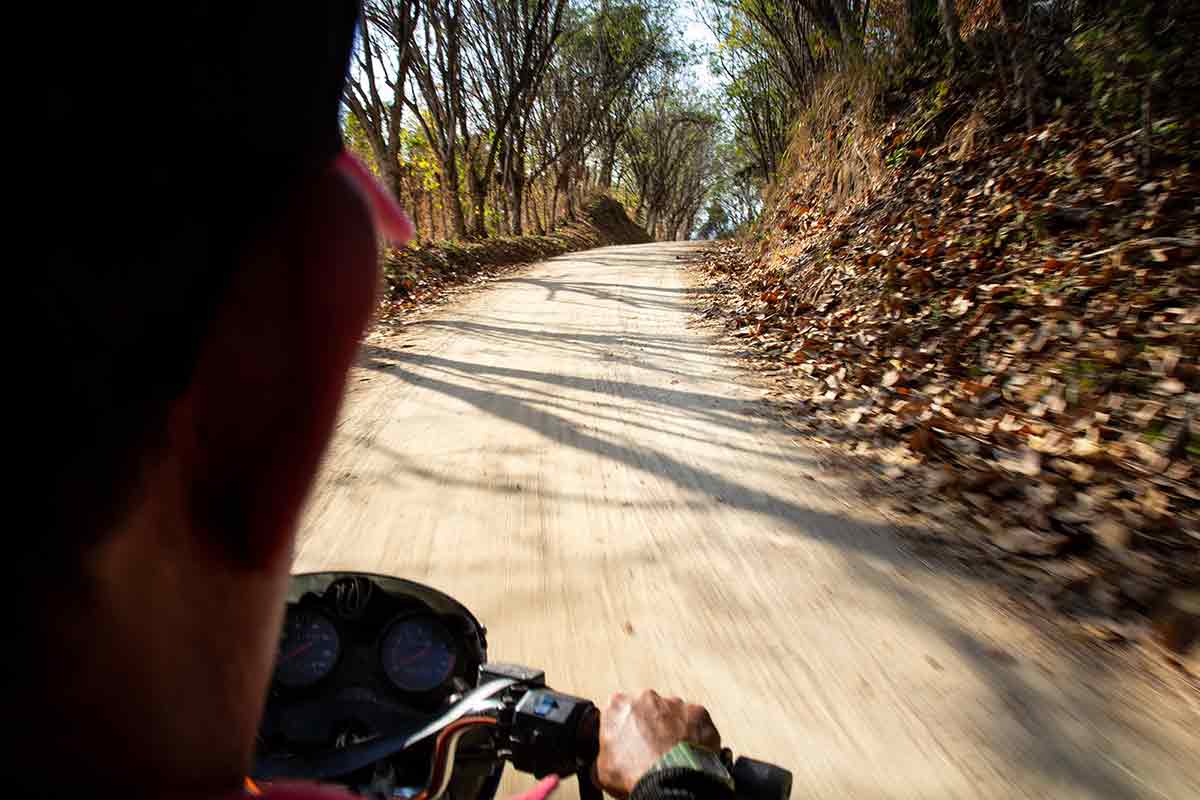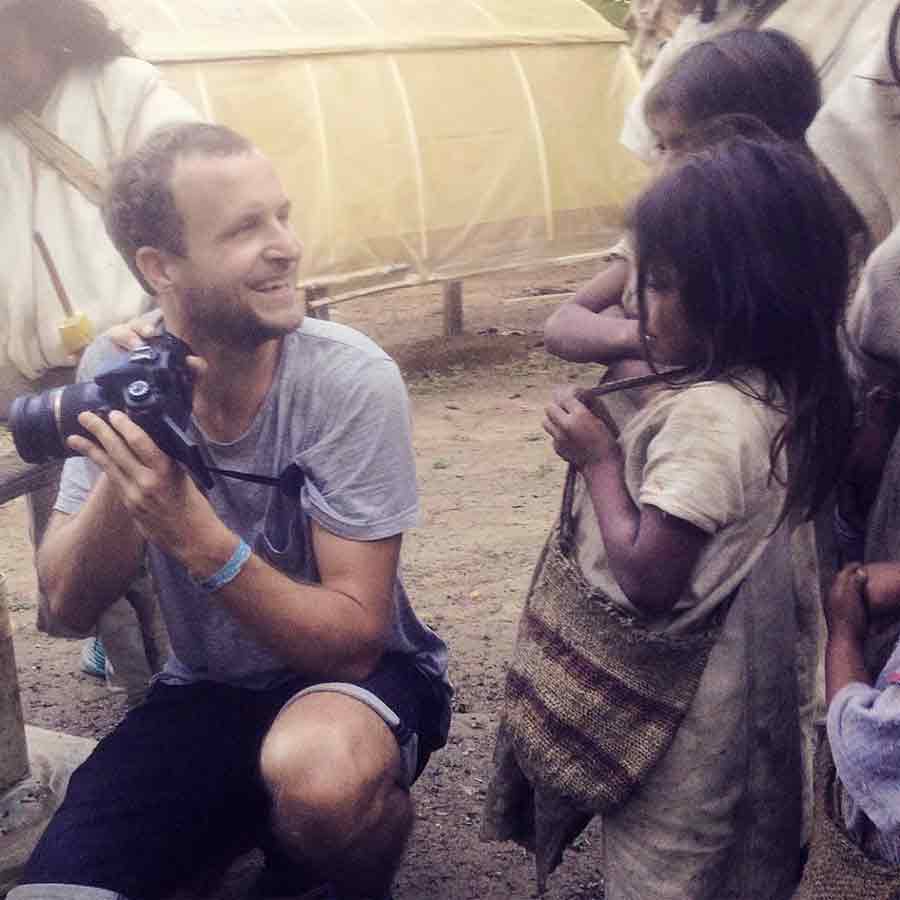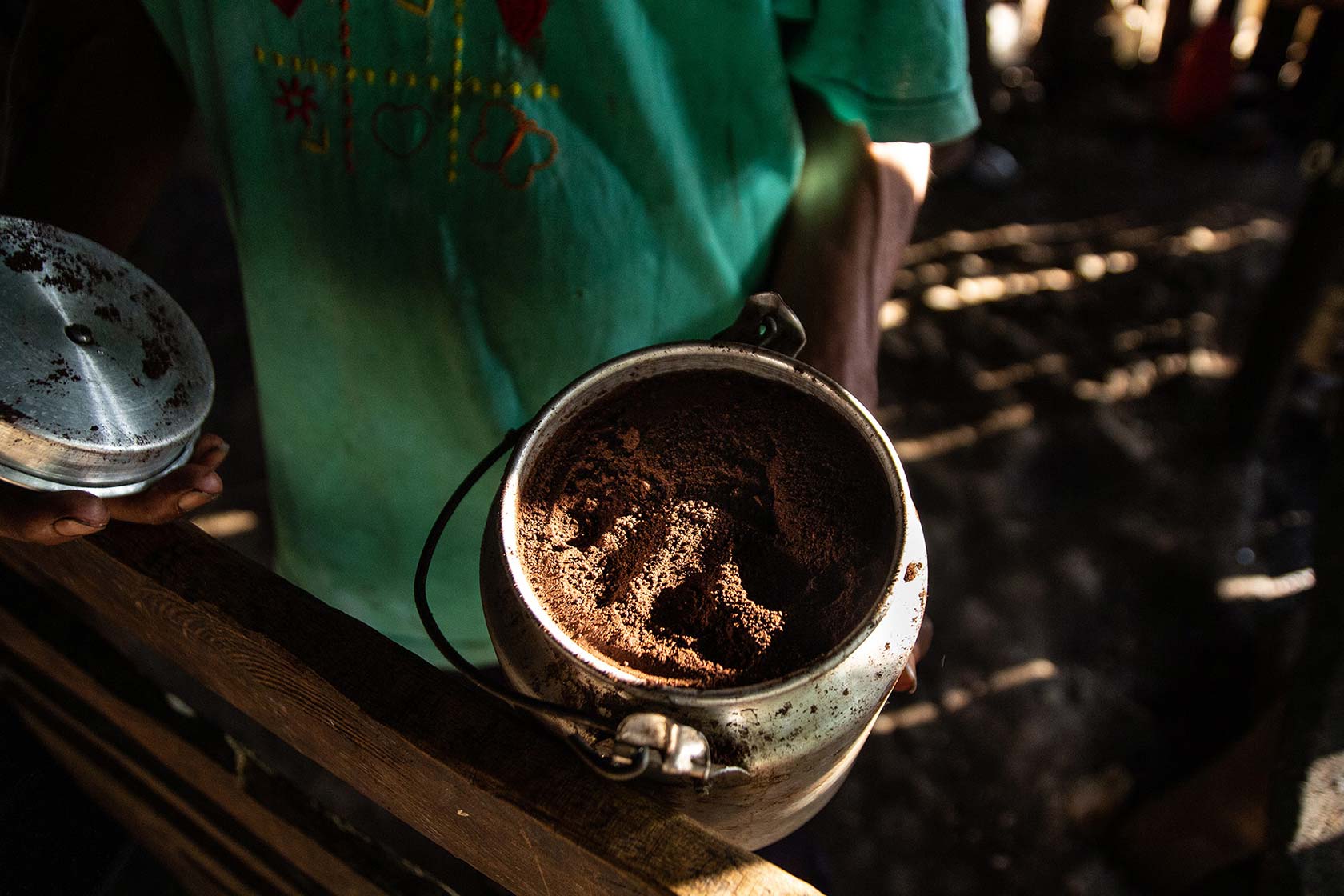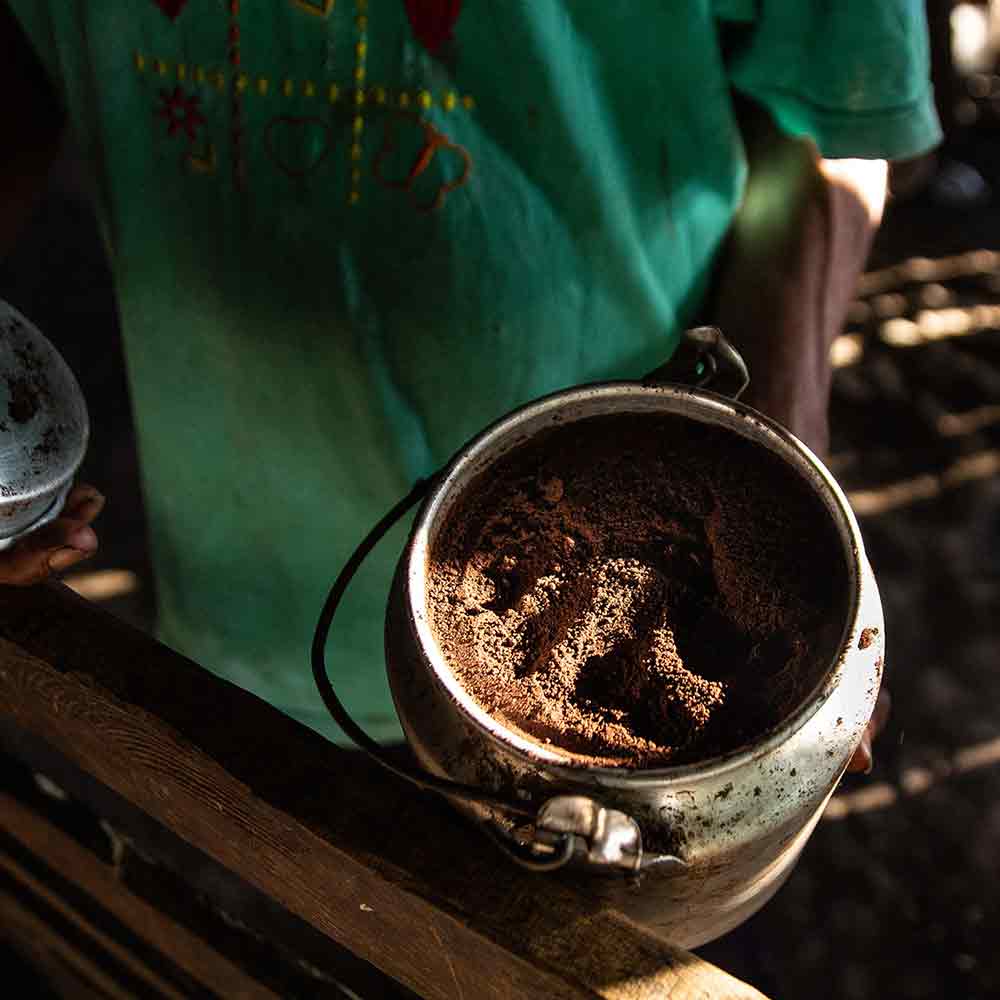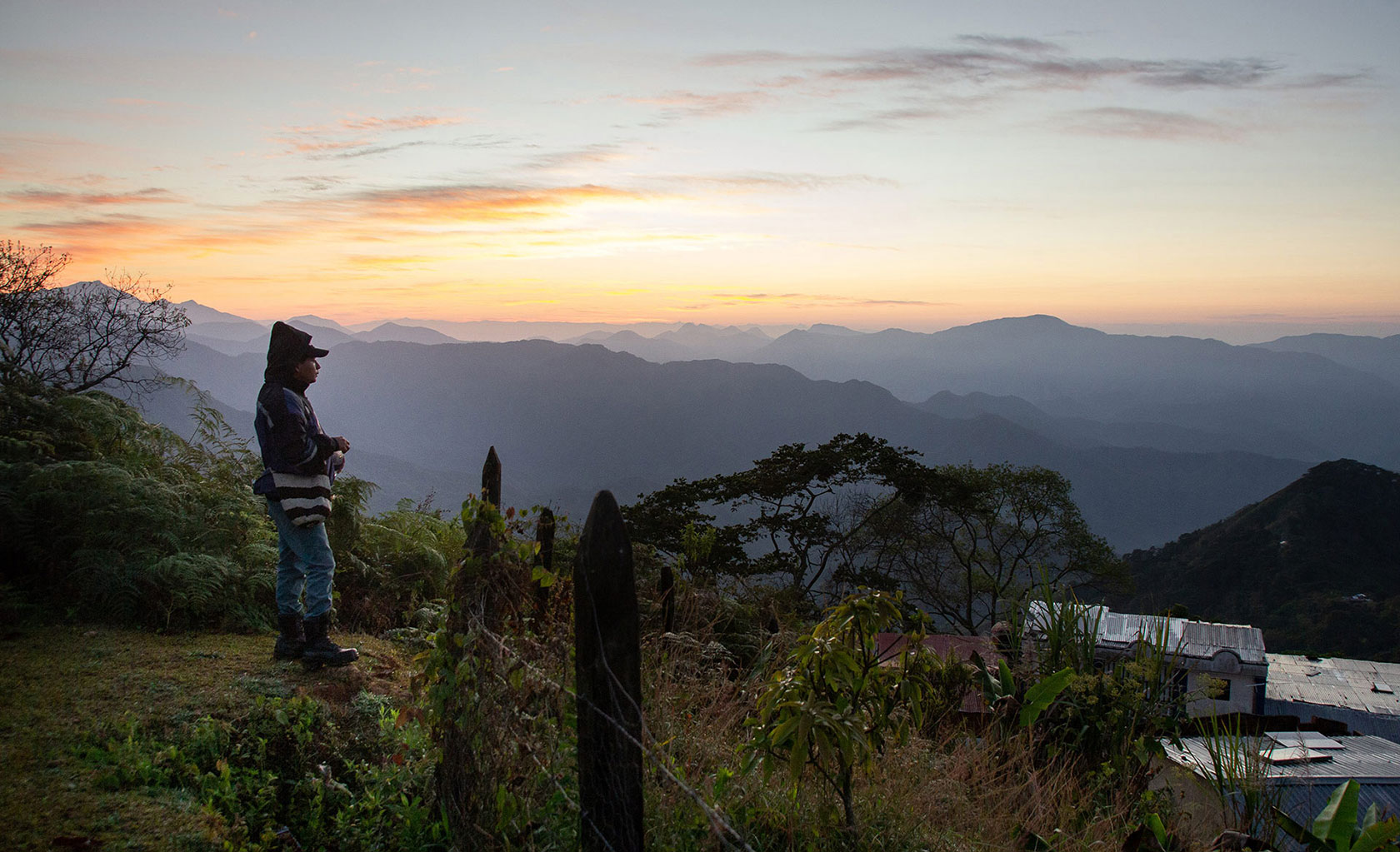
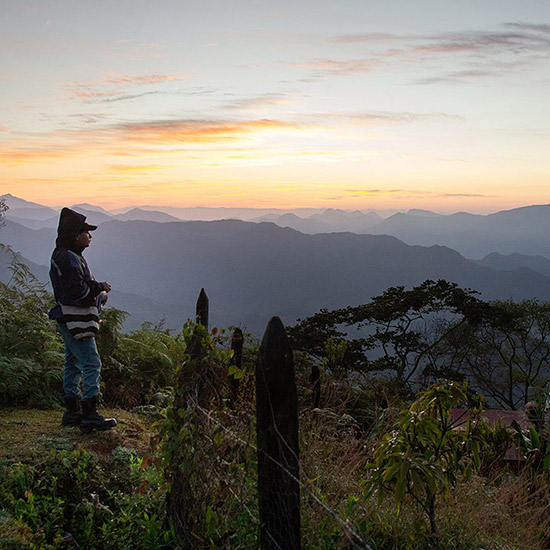
The Arhuaco
Chapter 1: Dipping Into Another Universe
Colombia, January 2019
The Arhuaco
Chapter 1:
Dipping Into Another Univers
Colombia, January 2019
Umunukunu – At the beginning of this CafCaf post we hear a mysterious, melodic sound, music from another world. Umunukunu – or, ‘the heart of the world’.
—
The Arhuaco, an indigenous people of Colombia, regard the Sierra Nevada de Santa Marta as the beating heart that holds everything together. Earlier this year, I had the honor of getting a glimpse into their unique world, their culture, and, of course, the role coffee plays in their lives. While a blog post can only attempt to render the impact this visit had on me, the following lines are going to give you an impression – imagine taking a crispy cookie and dipping it into a mug of steaming coffee. This is not an encyclopedia entry; this is a dip into another universe, based on my personal experiences.
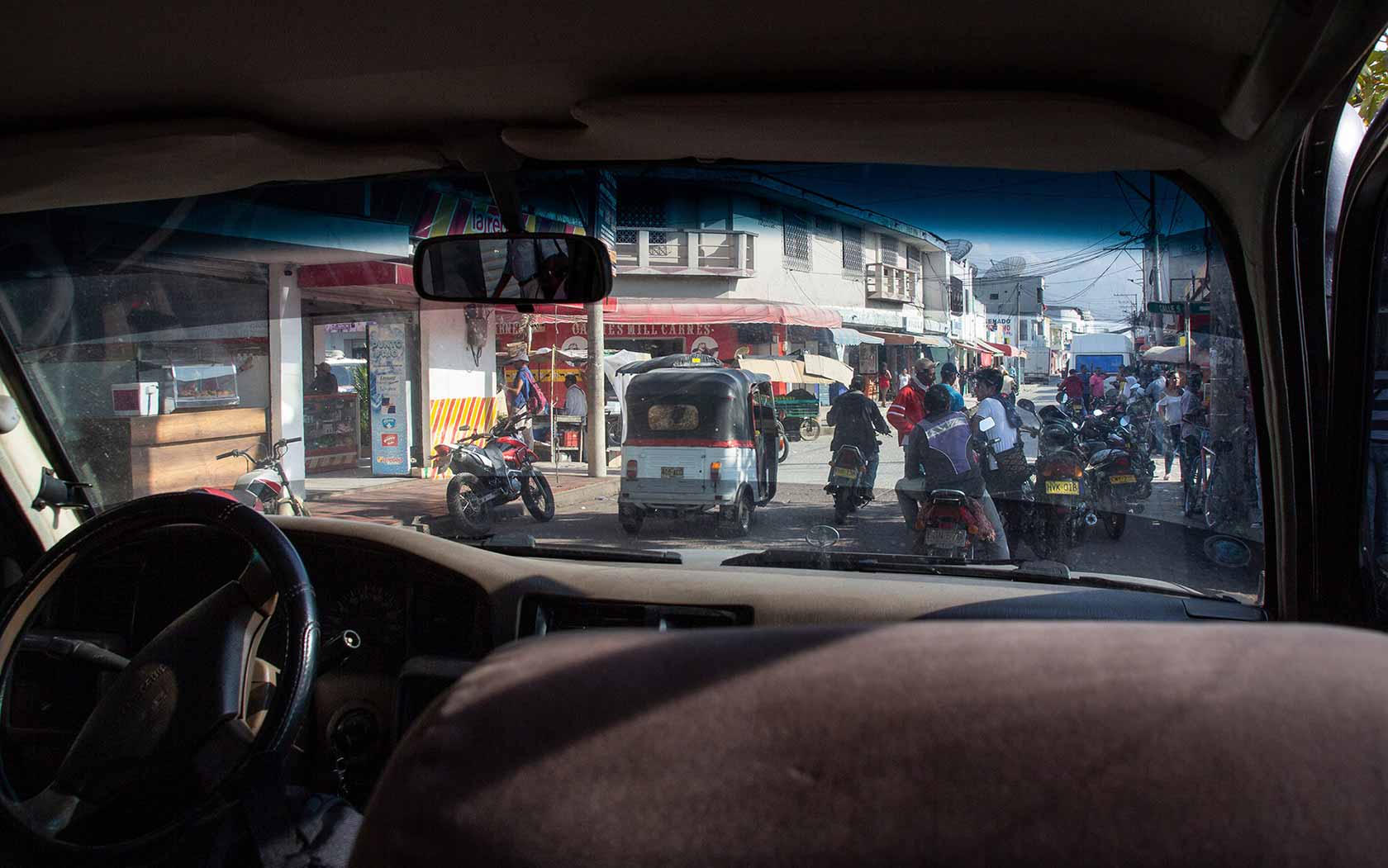
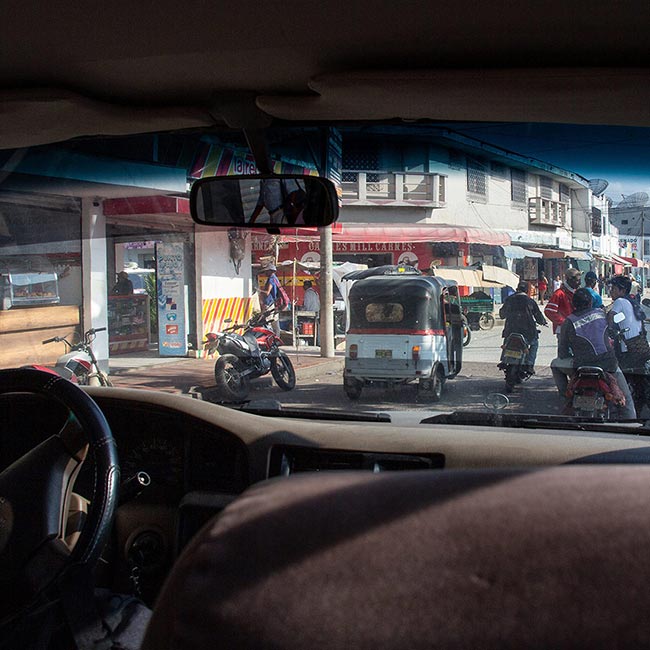
Fundación
Waiting for the driver.
Fundación
Waiting for the driver.
The trip to the starting point of my hike took very long – as trips in Colombia mostly do. My Arhuaco friend and I wanted to arrive around 2pm and didn’t arrive in the mountains until the late evening. The following place is called ‘el Cincuenta’, which means ‘the fifty’. I love that village name and the stories you hear about it. The best one was ‘there was a random guy sitting here, bored. He scratched the number 50 into a piece of wood and left.’.
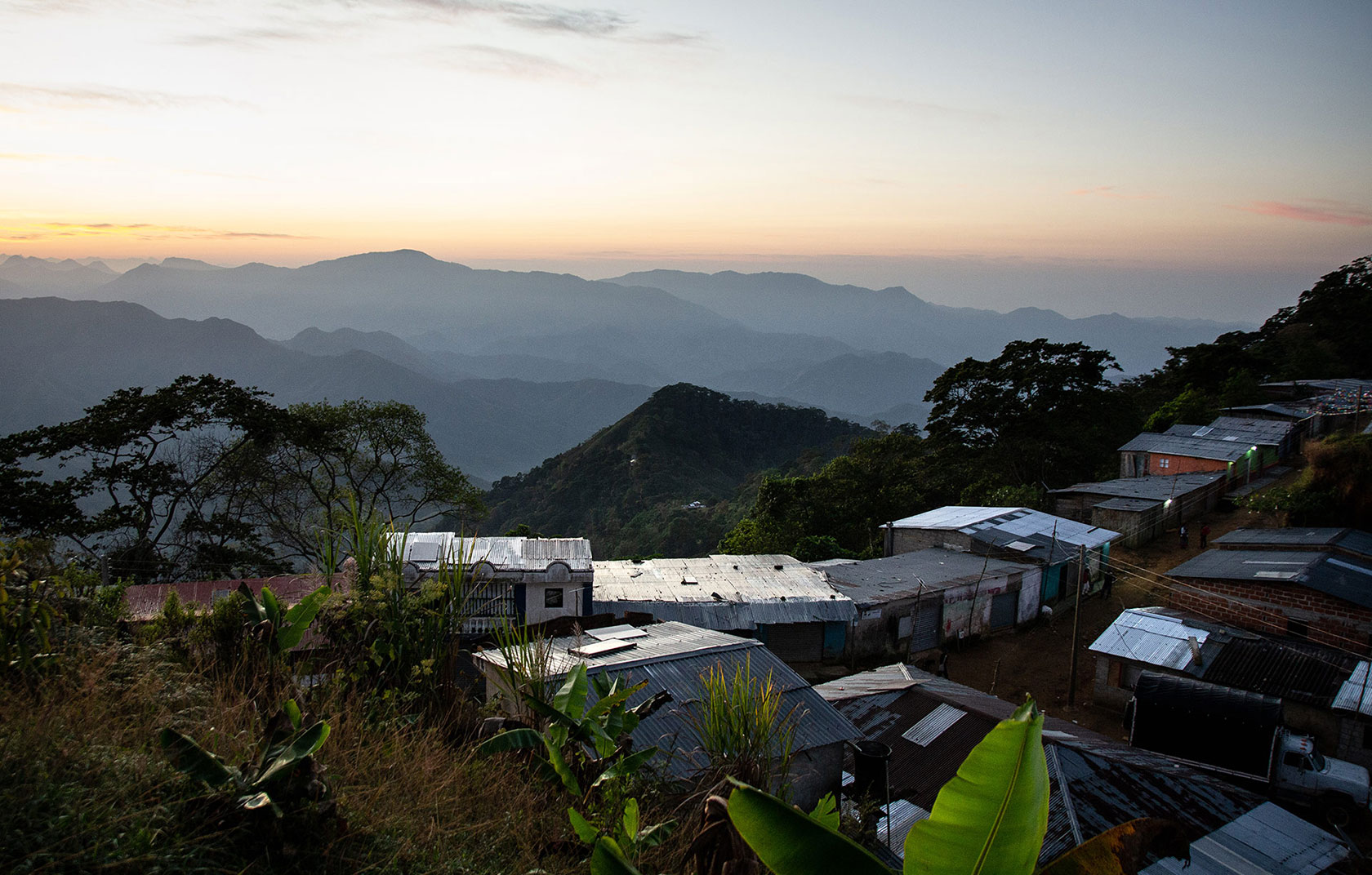
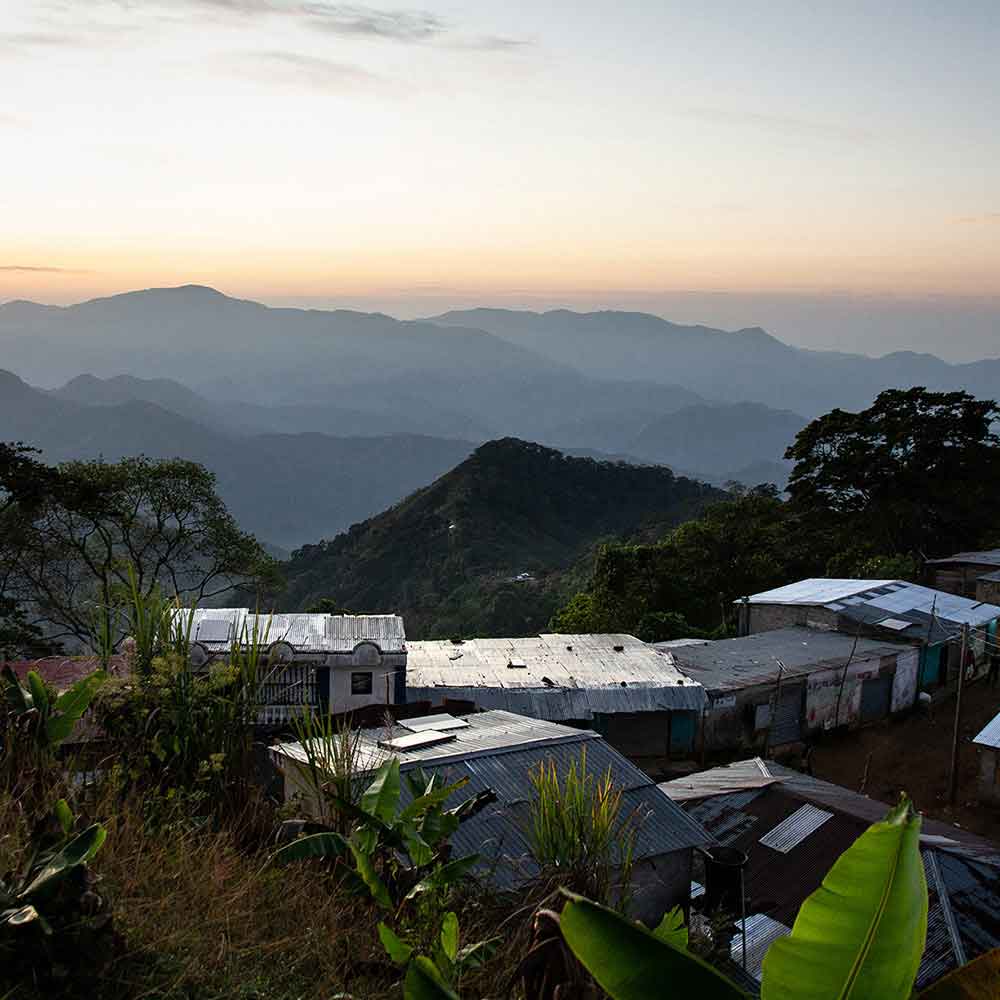
El Cincuenta
The starting point of my hike.
El Cincuenta
The starting point of my hike.
The Geographical and Political Map
The Arhuaco mainly live in northern Colombia in the Sierra Nevada, which is divided into three regions: Magdalena, Guajira and Cesar. There are three other peoples in this area, too, namely the Kogis – who live much further up in the mountains – the Kankuamo, and the Wiwas. In total, there are 87 different tribes in Colombia half of which live in the La Guajira, Cauca and Nariño Departments. At the time of the colonization by Europeans in the early sixteenth century, the indigenous peoples were expelled from their lands and forced to work in big Haciendas, which is why many of them re-settled in the protected Sierra Nevada where they still have access to the sea. This is also the reason why they are skeptical, especially towards (white) strangers: they have been, to put it bluntly, screwed over too often in the course of their history. Most recently, the Colombian civil war that lasted from 1948-1958 (La Violencia) made them settle further up in the valleys and the Catholic evangelization, especially by the Capuchins, forced them to give up their language Iku and wear their traditional clothing. Since the 1970s, they have also been victim to guerilla groups belonging to the FARC and the paramilitary which exploited the Arhuacos’ resources for their drug trade.
The Geographical and Political Map
The Arhuaco mainly live in northern Colombia in the Sierra Nevada, which is divided into three regions: Magdalena, Guajira and Cesar. There are three other peoples in this area, too, namely the Kogis – who live much further up in the mountains – the Kankuamo, and the Wiwas. In total, there are 87 different tribes in Colombia half of which live in the La Guajira, Cauca and Nariño Departments. At the time of the colonization by Europeans in the early sixteenth century, the indigenous peoples were expelled from their lands and forced to work in big Haciendas, which is why many of them re-settled in the protected Sierra Nevada where they still have access to the sea. This is also the reason why they are skeptical, especially towards (white) strangers: they have been, to put it bluntly, screwed over too often in the course of their history. Most recently, the Colombian civil war that lasted from 1948-1958 (La Violencia) made them settle further up in the valleys and the Catholic evangelization, especially by the Capuchins, forced them to give up their language Iku and wear their traditional clothing. Since the 1970s, they have also been victim to guerilla groups belonging to the FARC and the paramilitary which exploited the Arhuacos’ resources for their drug trade.
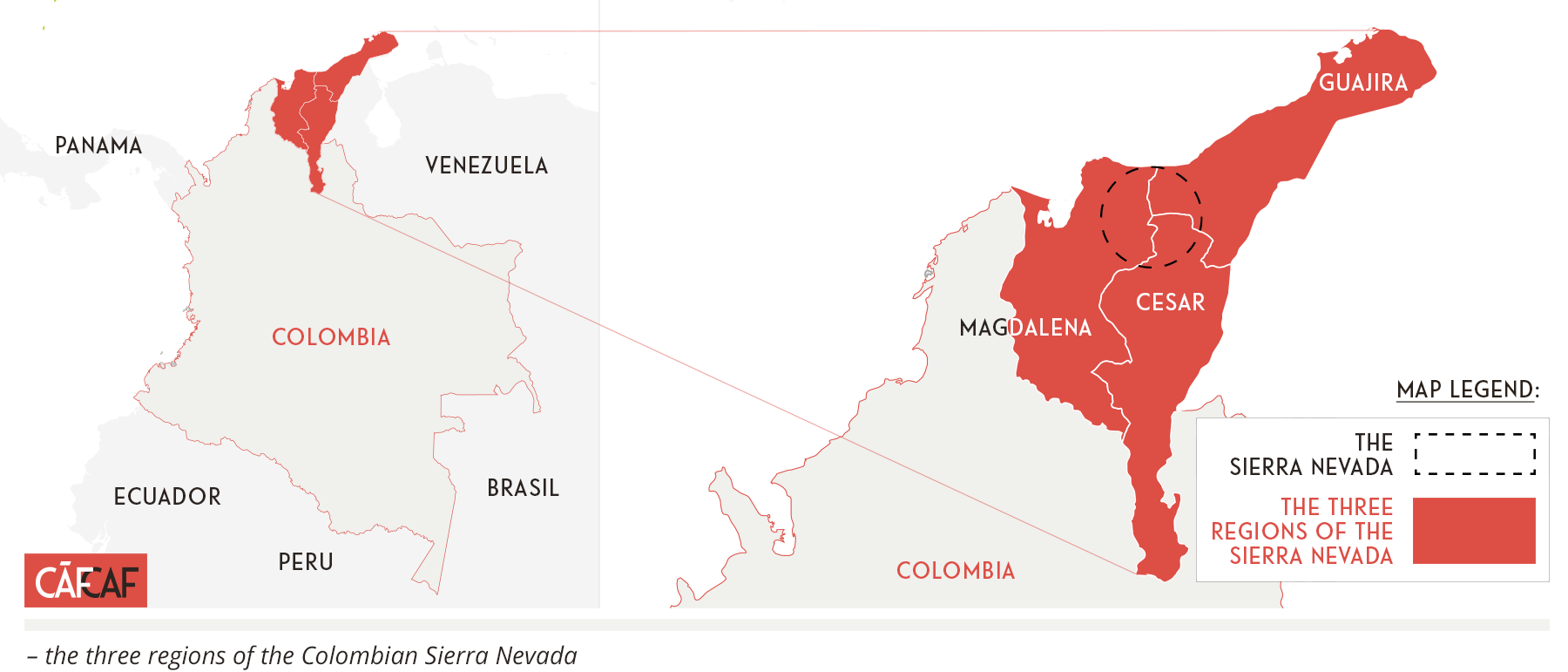
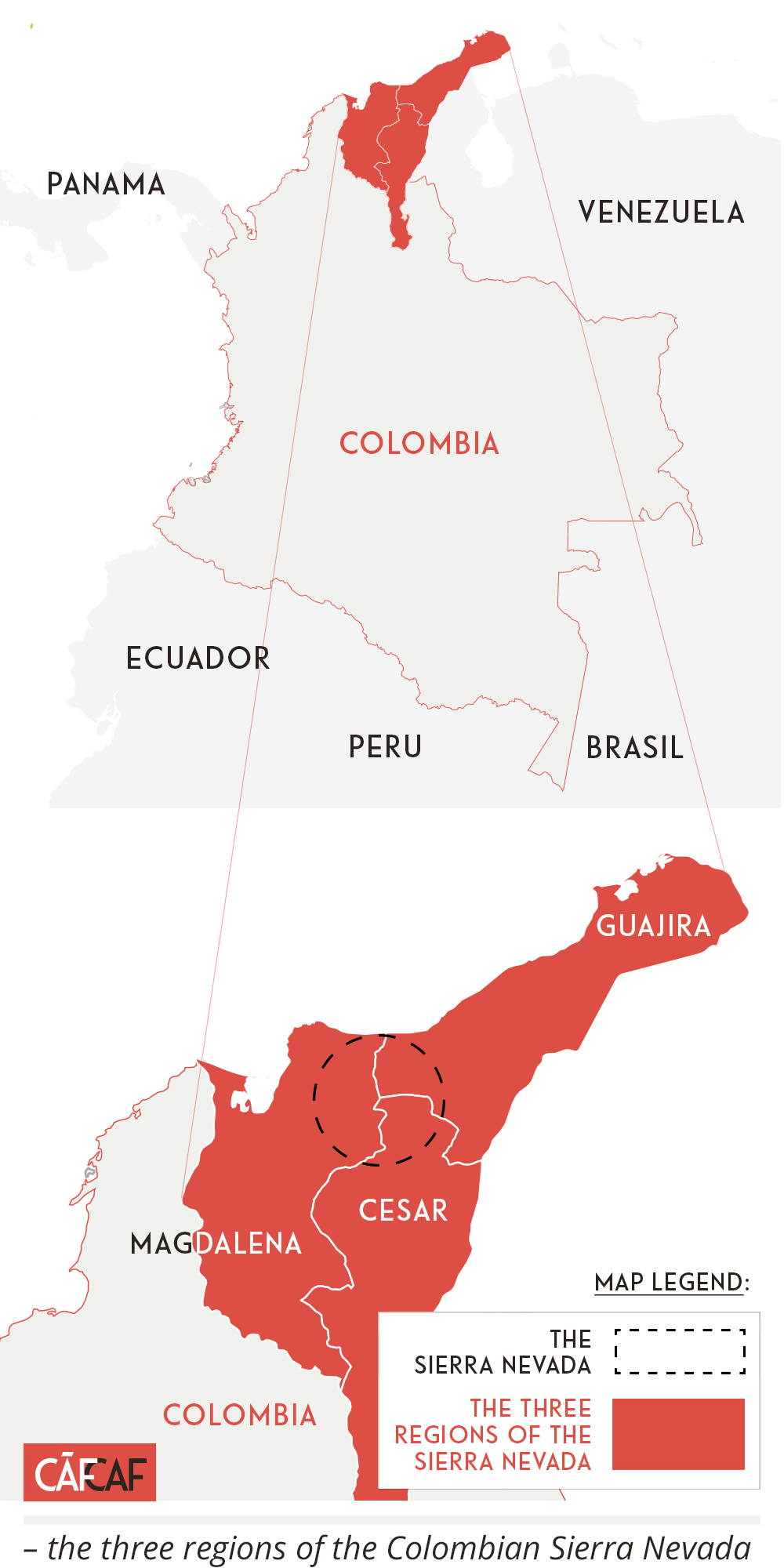
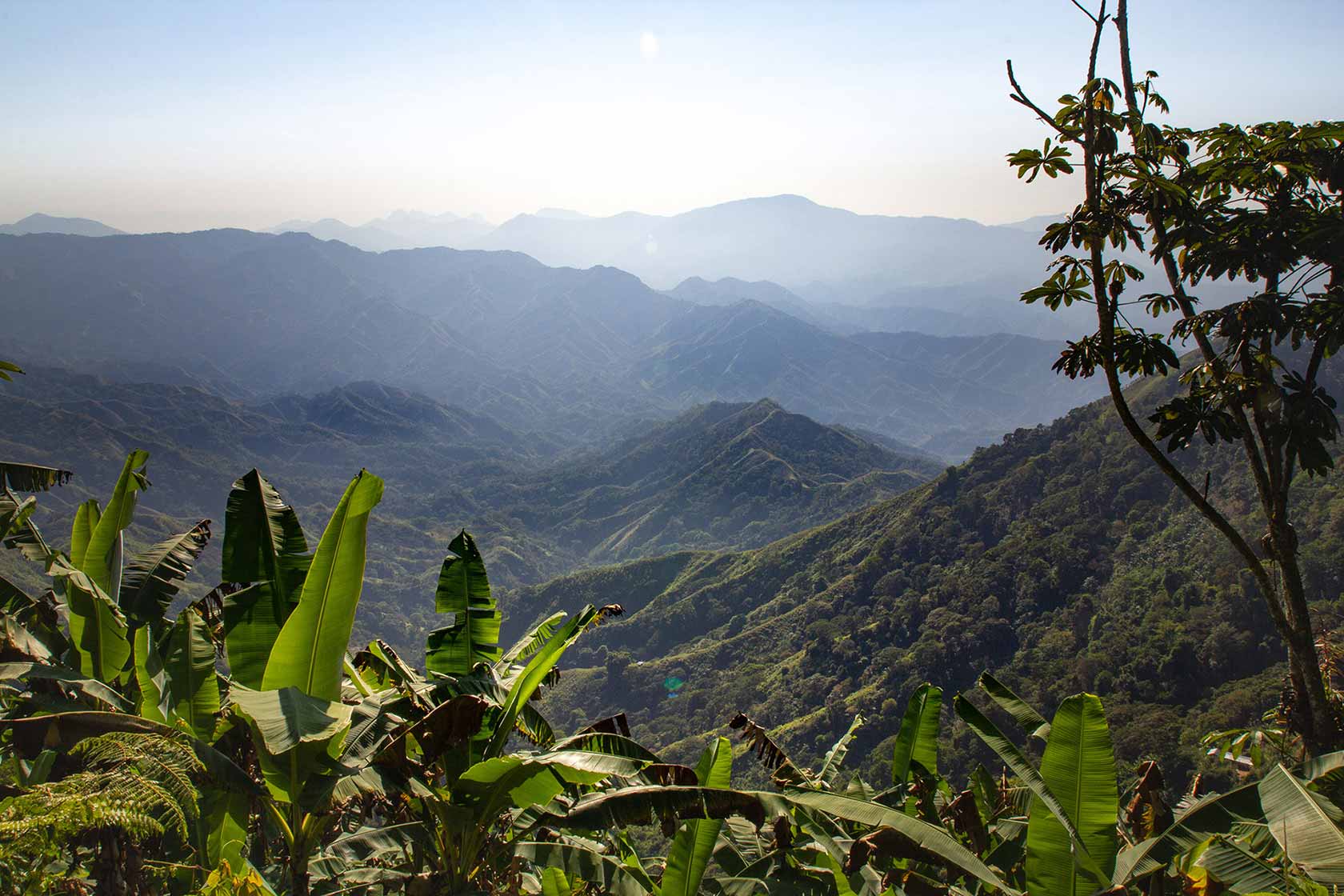
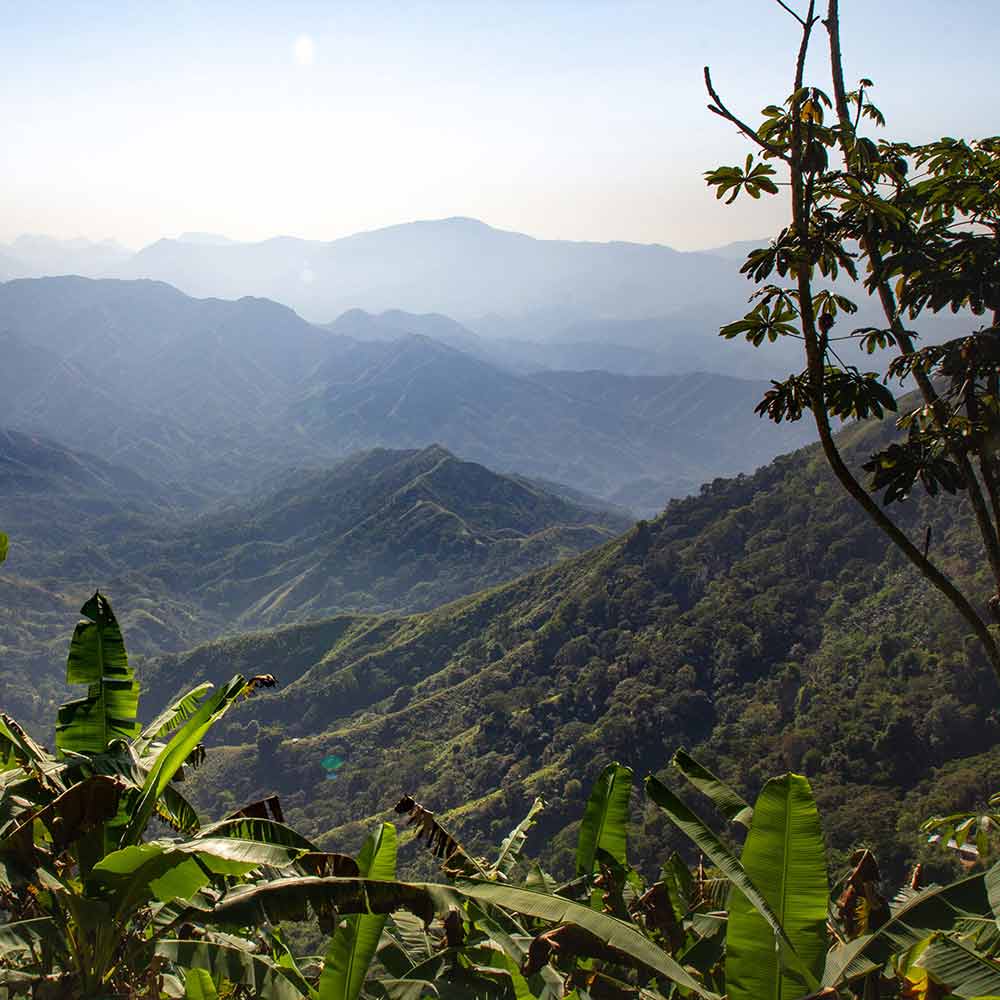
La Sierra Nevada
The heart of the world.
La Sierra Nevada
The heart of the world.
In the Sierra Nevada, you can only move on foot or with mules. These animals carry the food you need for your journey and you can hop on their back when the Colombian heat makes you tired.
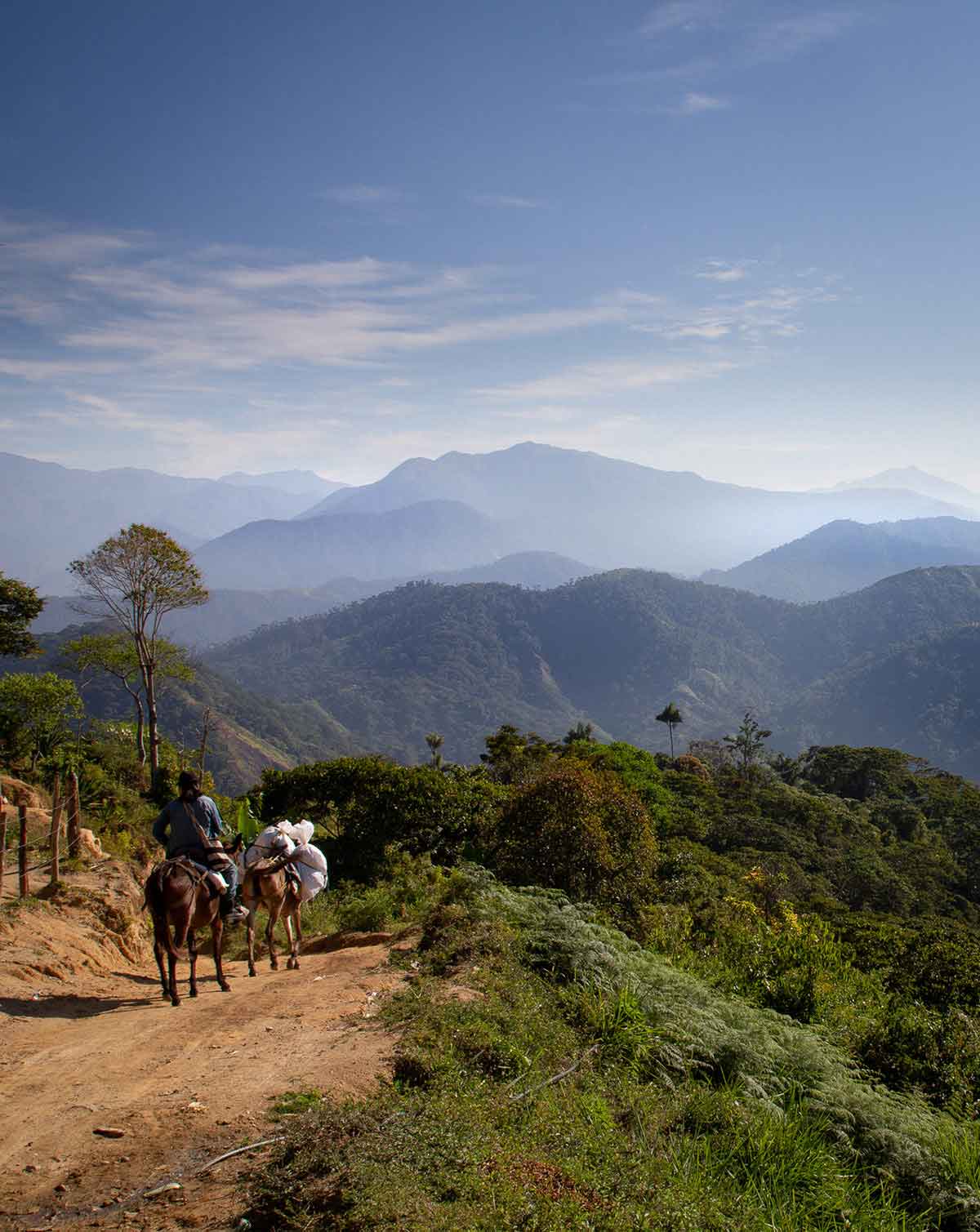
Getting to Know the People
According to the Arhuaco, we – and all other Colombians – are ‘hermanos menores’, which means something like ‘the less important brothers’. The Arhuaco are our older, wiser brothers, guardians of the sacred Sierra Nevada, in whose mountains over 700 rivers have their source. This ‘heart’ with its foggy forests provides our planet with oxygen and hosts a magnificent variety of species. The Arhuaco do not engage with other cultures; if a person belonging to the Arhuaco marries a ‘hermano menor’, he or she is not allowed to live in the protected region any longer. Again, the reason for this fraught relationship lies in the past: in the time of the colonization ‘hermanos menores’ settled at the fringes of the Sierra Nevada – they were called campesinos (peasants) and they are still there. Again and again, there are conflicts between the campesinos and the indigenous peoples, primarily caused by the two sides’ hugely different attitude towards nature. The Arhuaco cherish it above everything and dare not change it out of respect towards its ecological balance. For instance, in their view, there is a spirit in every tree that one has to pay tribute to. So it would mean hurting the health of the ‘heart’ to fell a tree. And if there is no other option, a new one must be planted immediately.
Getting to Know the People
According to the Arhuaco, we – and all other Colombians – are ‘hermanos menores’, which means something like ‘the less important brothers’. The Arhuaco are our older, wiser brothers, guardians of the sacred Sierra Nevada, in whose mountains over 700 rivers have their source. This ‘heart’ with its foggy forests provides our planet with oxygen and hosts a magnificent variety of species. The Arhuaco do not engage with other cultures; if a person belonging to the Arhuaco marries a ‘hermano menor’, he or she is not allowed to live in the protected region any longer. Again, the reason for this fraught relationship lies in the past: in the time of the colonization ‘hermanos menores’ settled at the fringes of the Sierra Nevada – they were called campesinos (peasants) and they are still there. Again and again, there are conflicts between the campesinos and the indigenous peoples, primarily caused by the two sides’ hugely different attitude towards nature. The Arhuaco cherish it above everything and dare not change it out of respect towards its ecological balance. For instance, in their view, there is a spirit in every tree that one has to pay tribute to. So it would mean hurting the health of the ‘heart’ to fell a tree. And if there is no other option, a new one must be planted immediately.
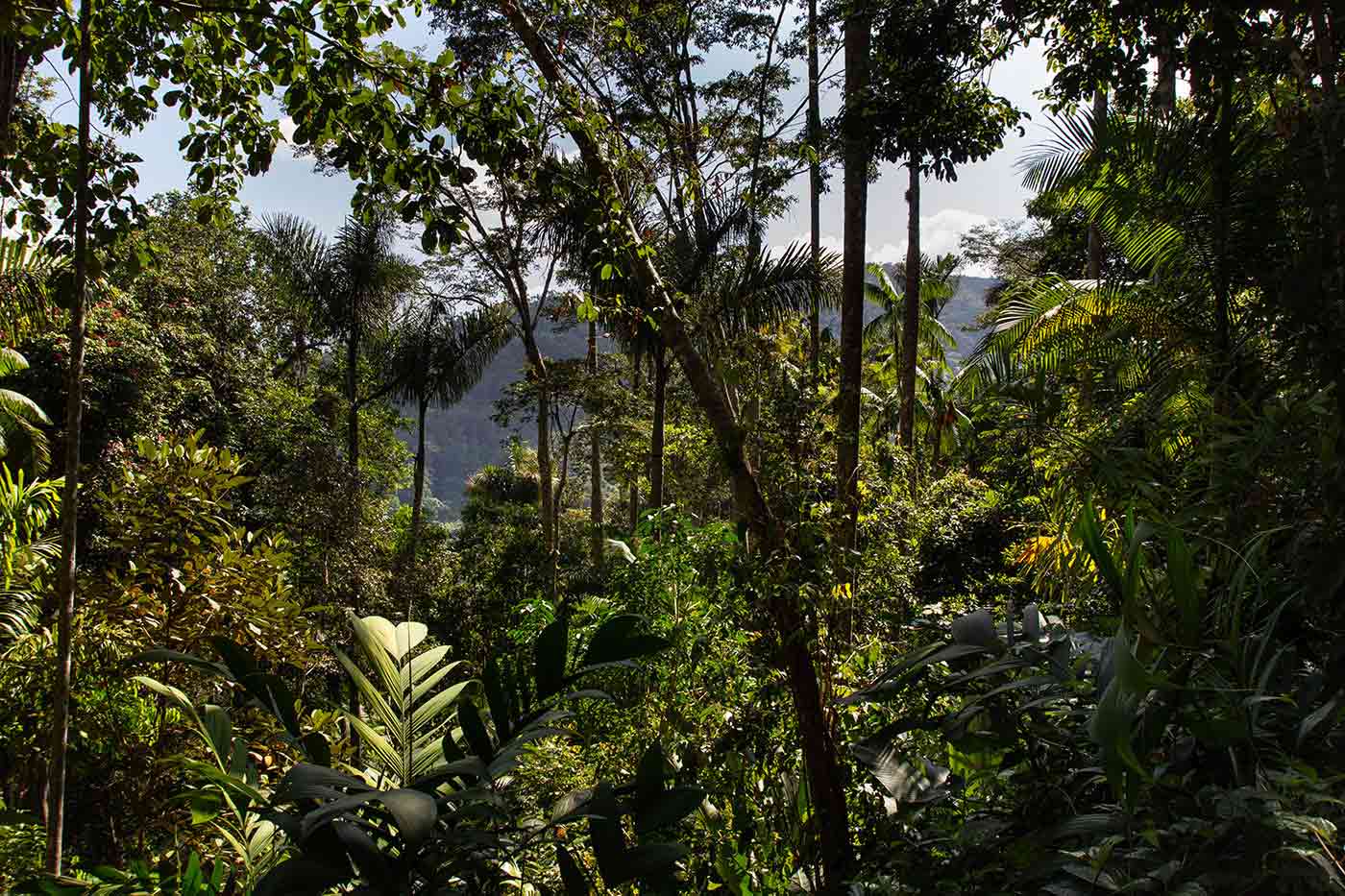
The campesinos, however, regard nature as a vehicle to achieve economic gain: in the area where they live, forests have been cleared in order to get a greater solar irradiation and enable them to produce more. Yet there have been some developments in favor of the Arhuaco: the indigenous peoples of the Sierra Nevada have been recognized as the ‘Chiefs’ since 1992 – it is up to them to decide what changes are made in the region, which is almost a sort of separate government within the country of Colombia. And it means that if the campesinos want to build a new street to be able to transport their coffee more efficiently, they have to ask the Arhuacos’ and others’ permission – of course, they would not grant it in cases like that.
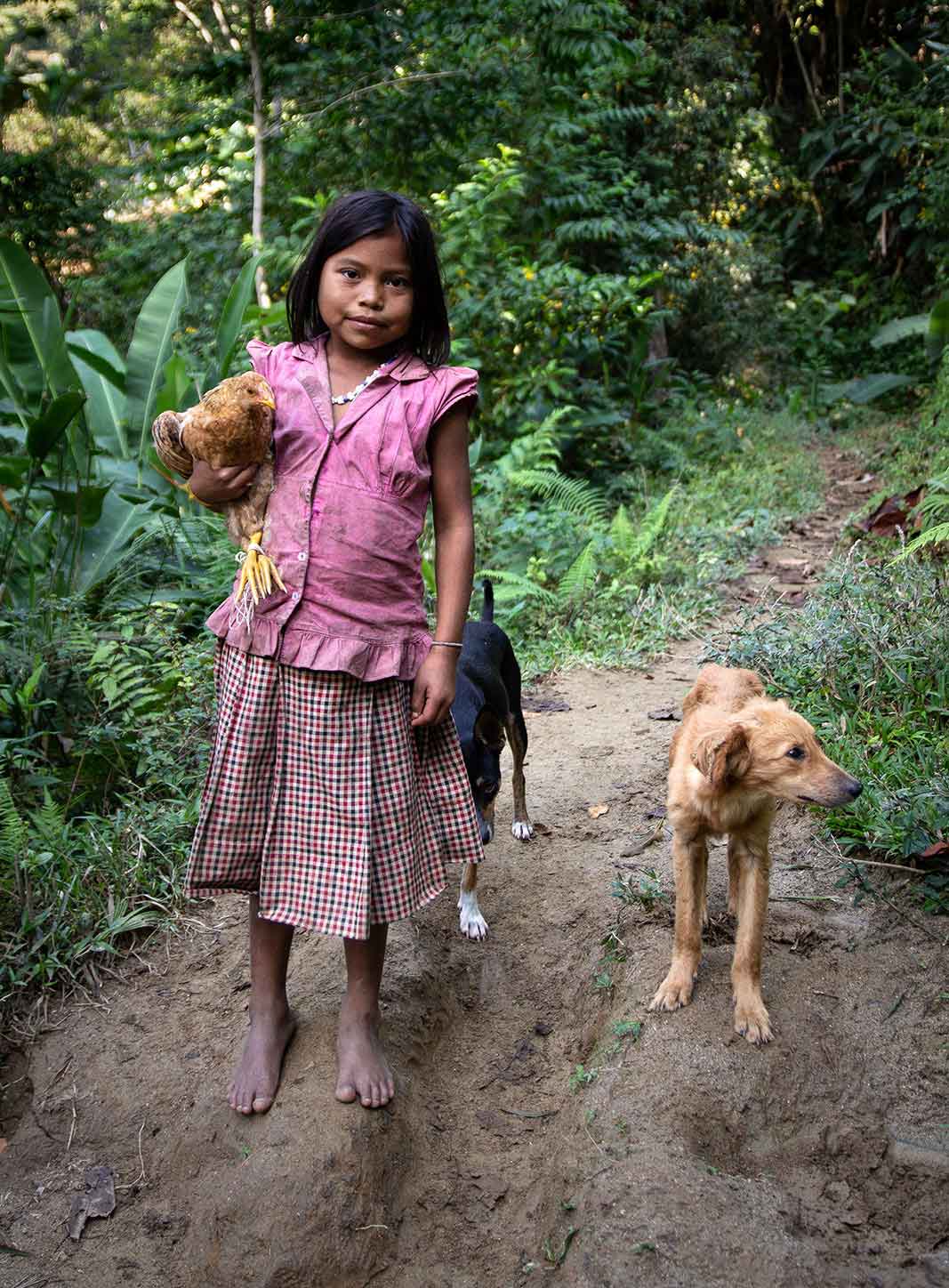
An Arhuaco girl with a chicken in her arm is passing by on our track. She was very curious to see a white stranger.
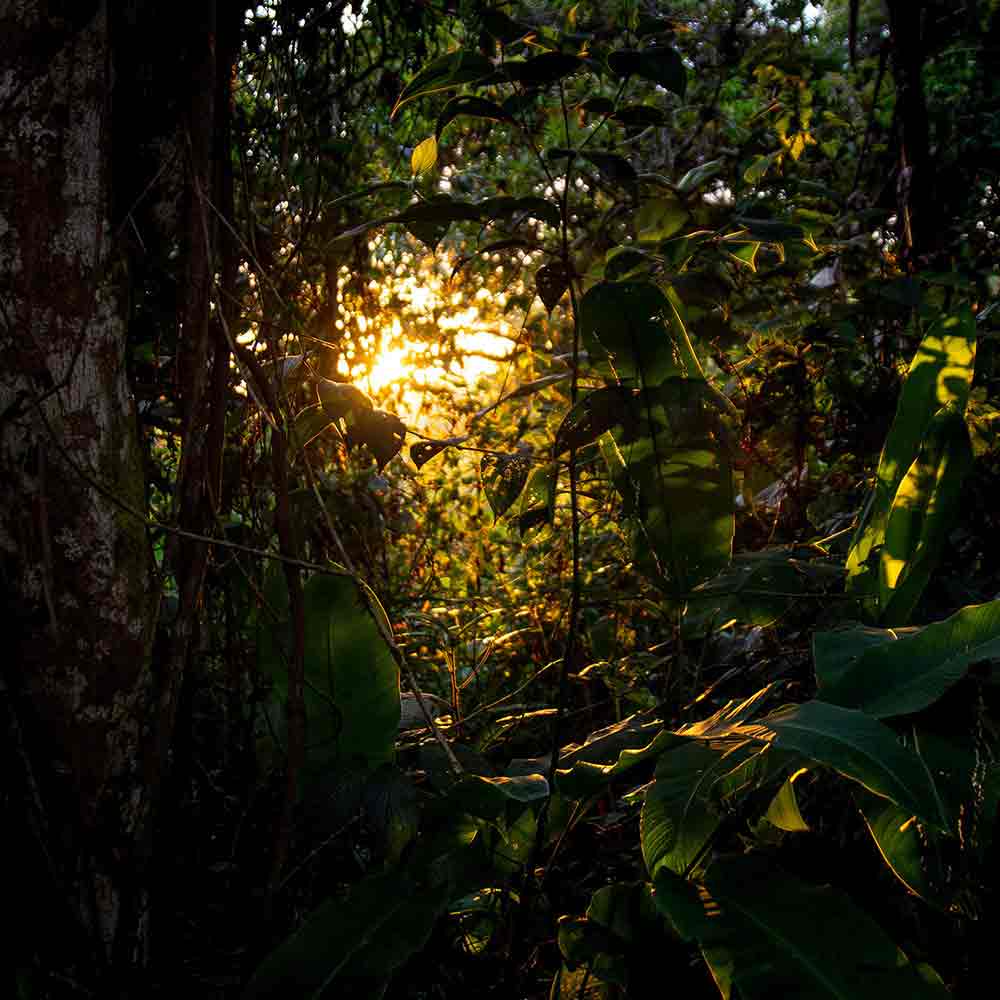
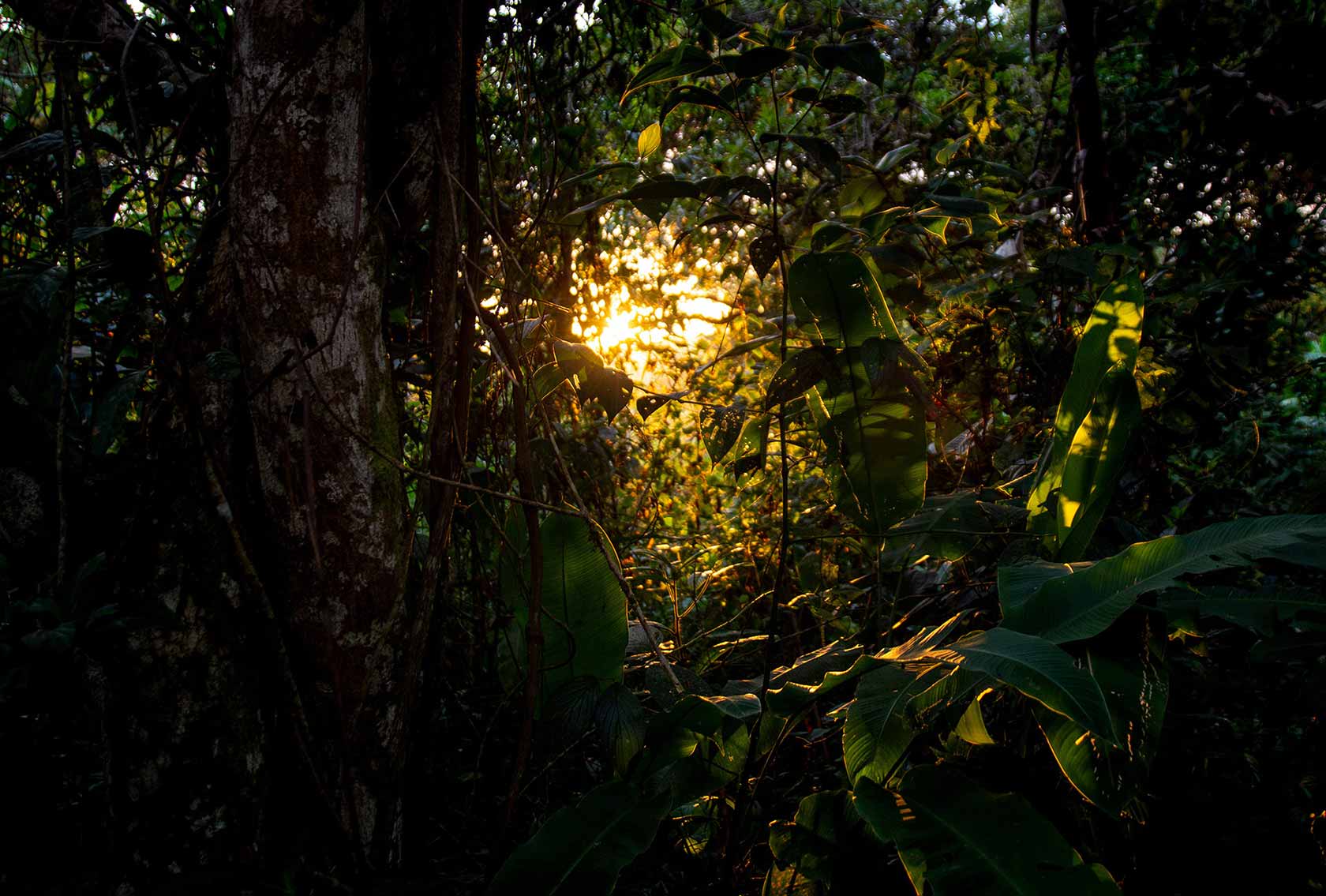
Lonely Sunset
in the wild of the Sierra Nevada.
Lonely Sunset
in the wild of the Sierra Nevada.
After a six-hour-hike in the Colombian heat, we finally arrived at the hut of familia Izquierdo Montero, who hosted me. As they never see foreigners, they don’t have any guest rooms, much less matresses for guests. I slept outside in my hammack.
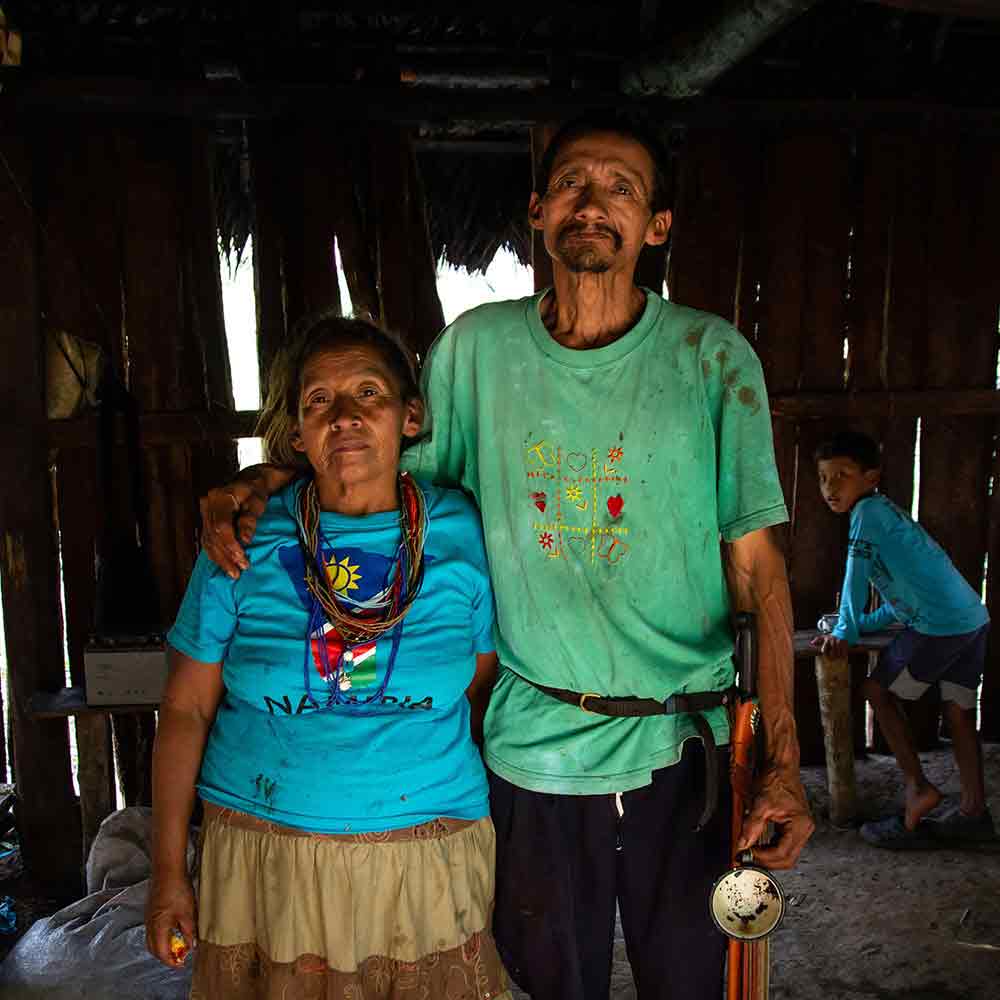
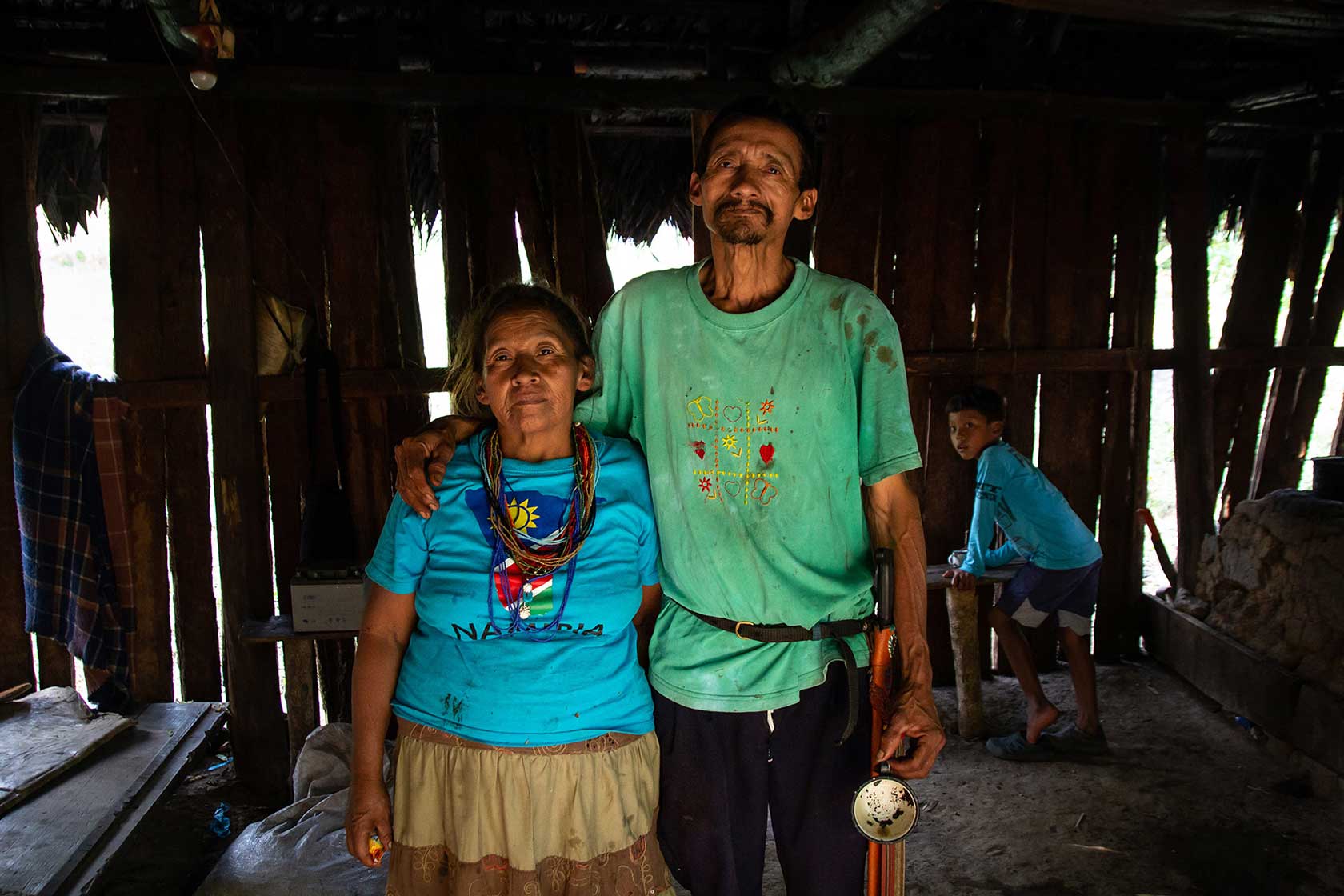
My Hosts
La familia Izquierdo Montero
My Hosts
La familia Izquierdo Montero
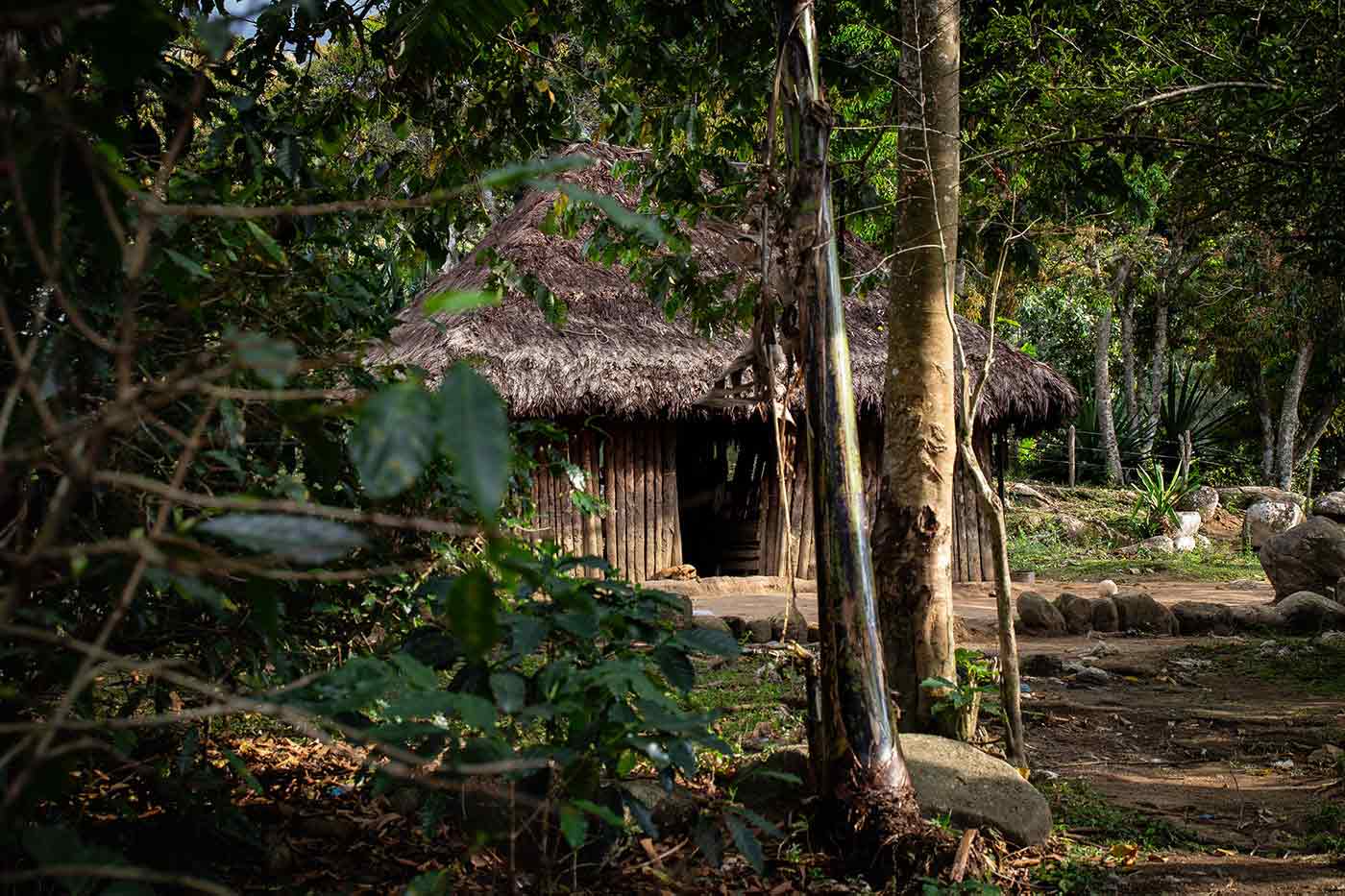
The simple kitchen of la familia Izquierdo Montero.
Coca leafs
Coca is simply part of the daily lives and culture of the Arhuaco. They grow it to then dry and roast the leaves and chew them, similarly as it is practiced in Peru. All of this is legal.
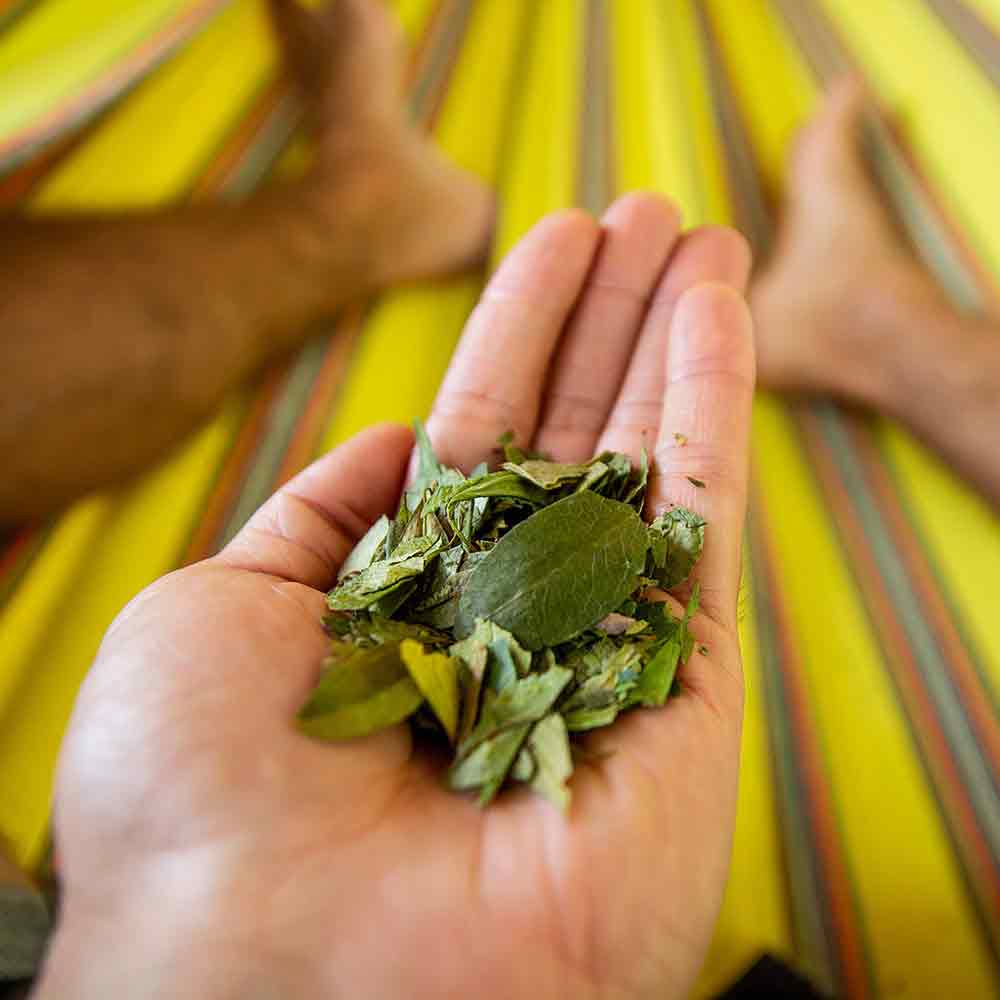
Snapshots from Everyday Arhuaco Life
While this particular characteristic of Arhuaco life has also caused them painful trouble – I mentioned their unwitting involvement in the drug trade – coca is simply part of their daily lives and culture. They grow it to then dry and roast the leaves and chew them, similarly as it is practiced in Peru. All of this is legal. When two Arhuaco, typically males, meet, they exchange coca leaves: each one puts a handful of leaves into the other’s mochila (shoulder back or rucksack).
Snapshots from Everyday Arhuaco Life
While this particular characteristic of Arhuaco life has also caused them painful trouble – I mentioned their unwitting involvement in the drug trade – coca is simply part of their daily lives and culture. They grow it to then dry and roast the leaves and chew them, similarly as it is practiced in Peru. All of this is legal. When two Arhuaco, typically males, meet, they exchange coca leaves: each one puts a handful of leaves into the other’s mochila (shoulder back or rucksack).
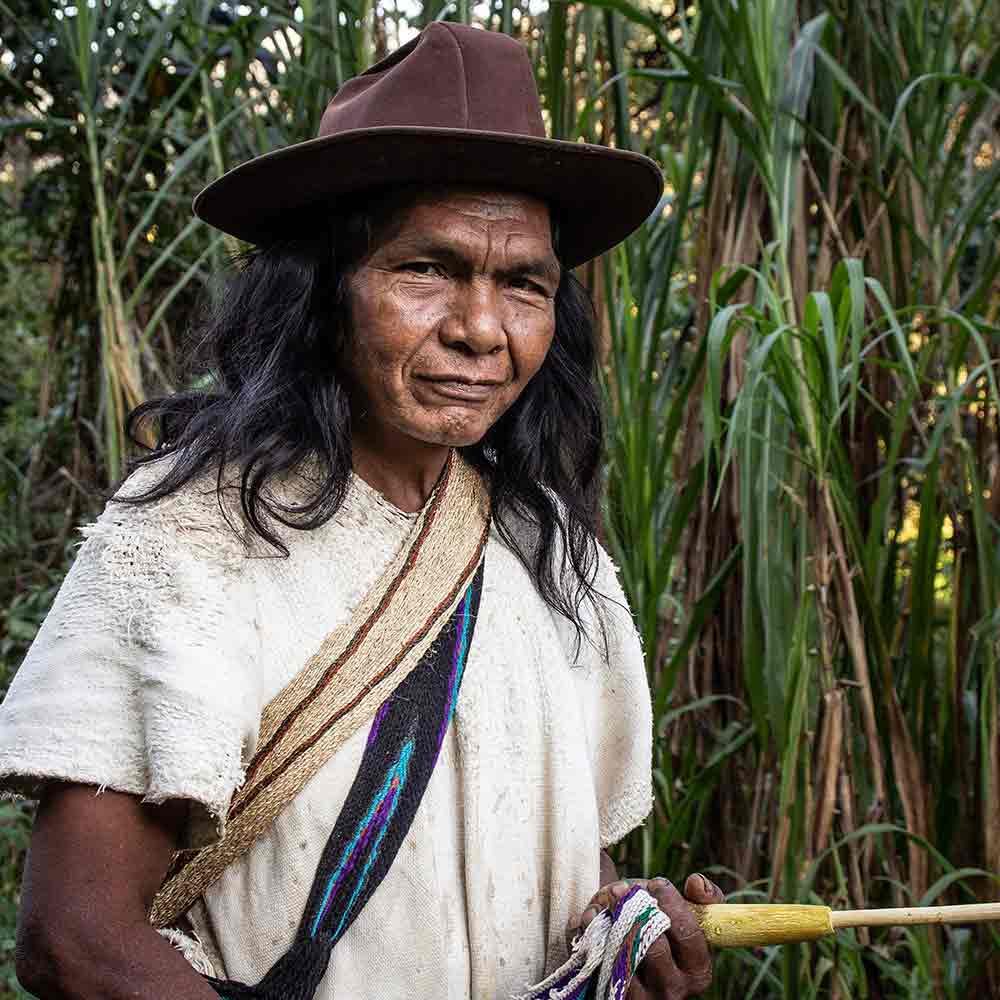
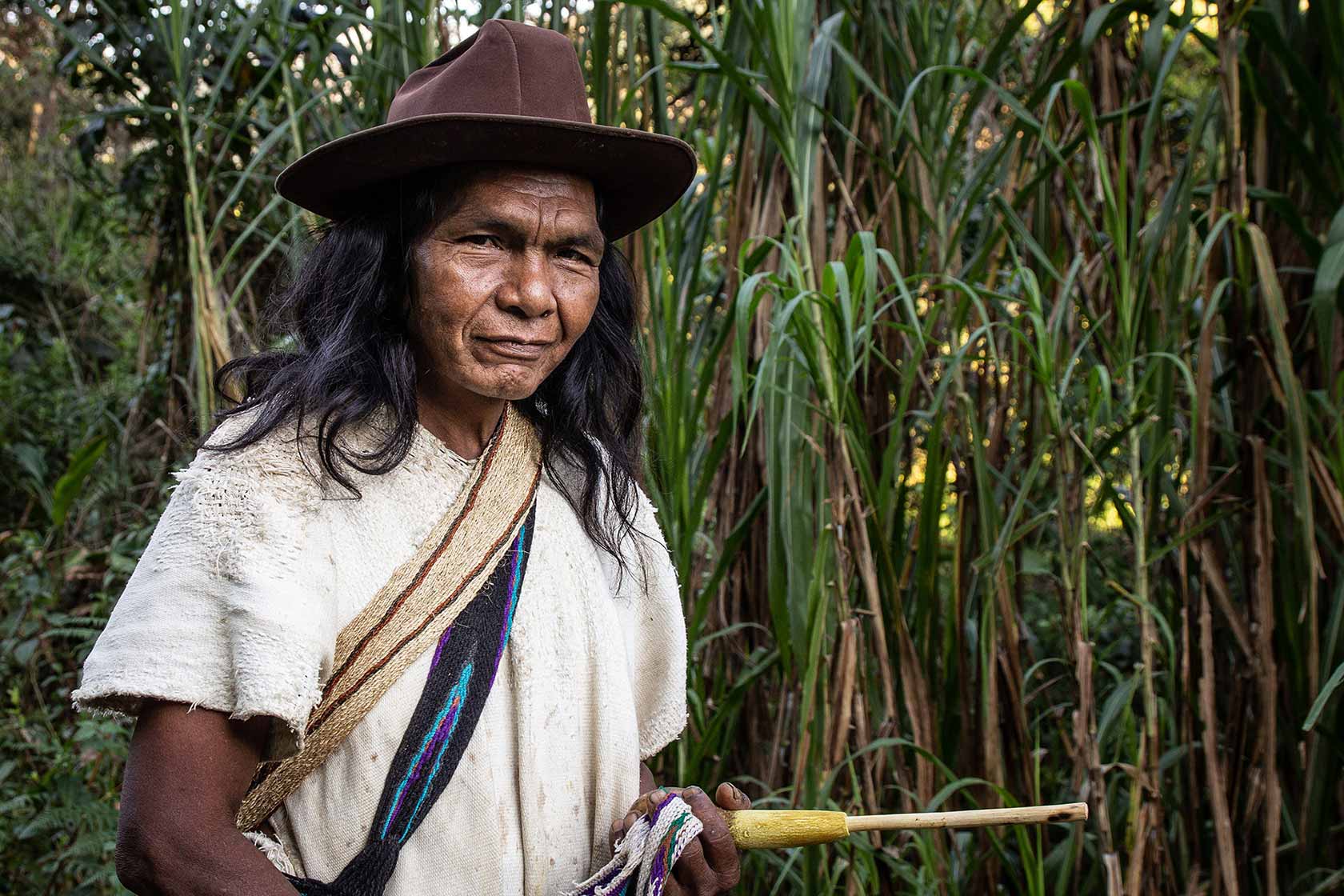
On my next days hike, I met this male Arhuaco. This picture captures the moment he was just taking some coca leafs out of his mochila to greet my Arhuaco amigo.
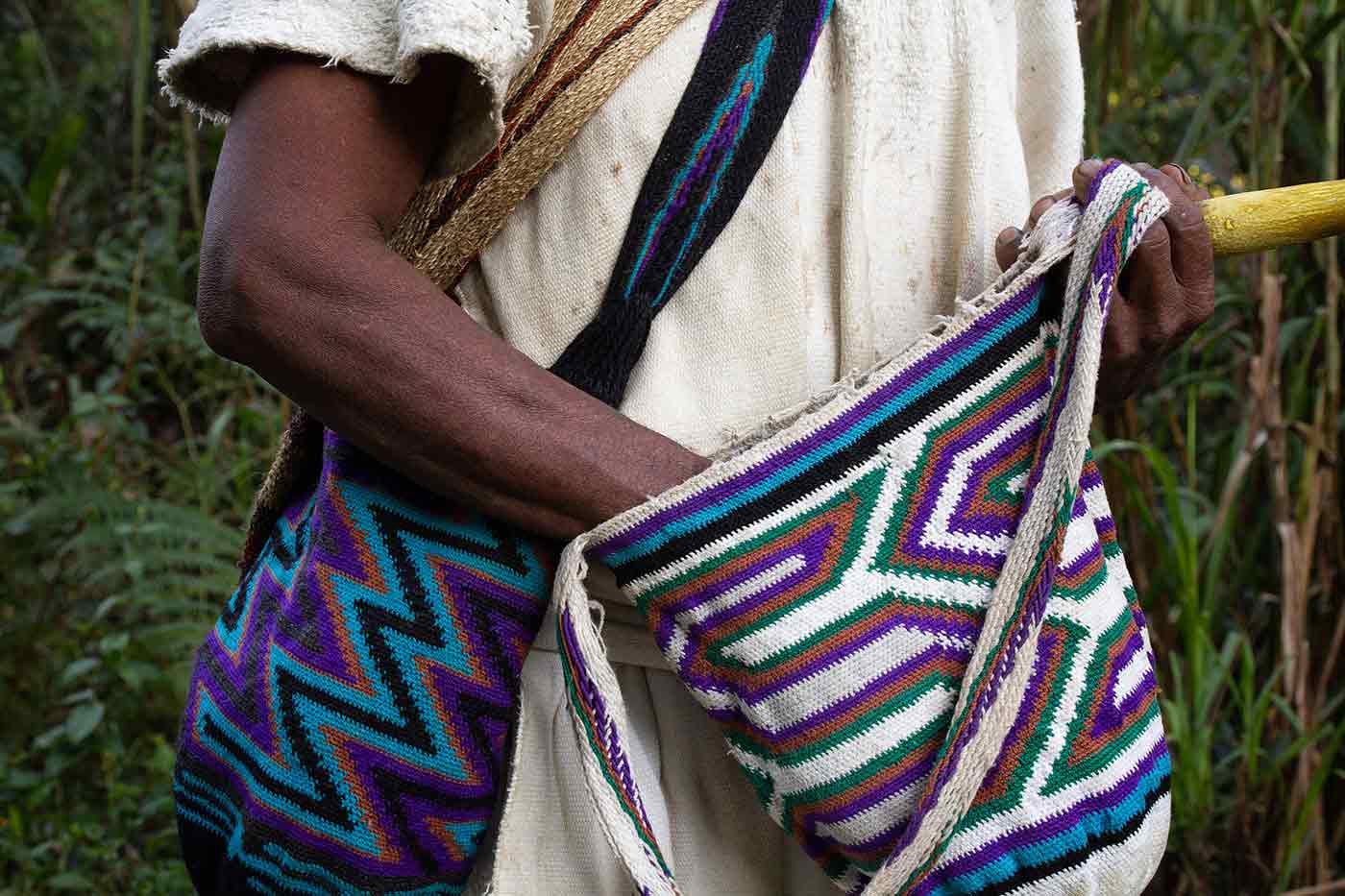
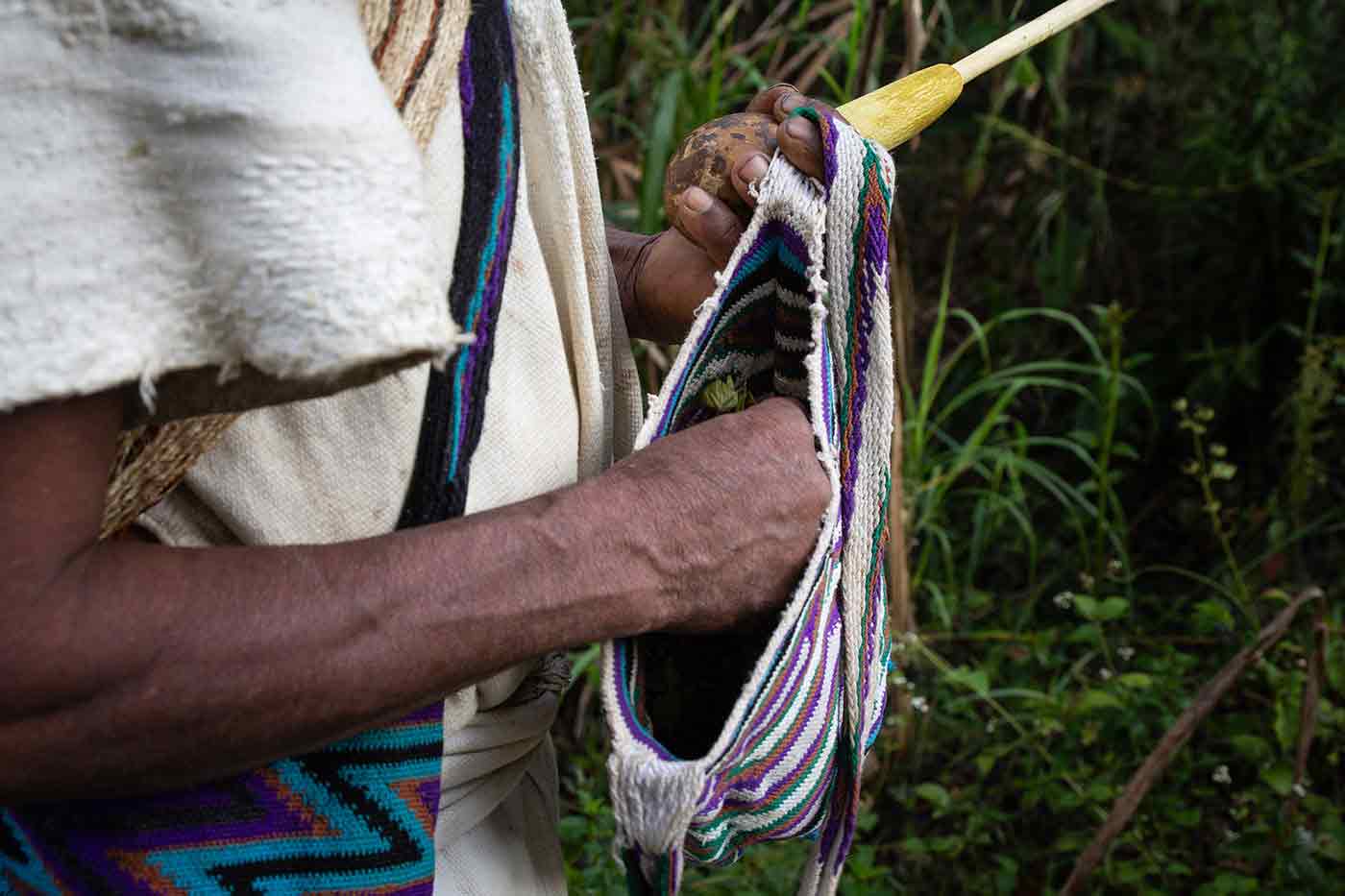
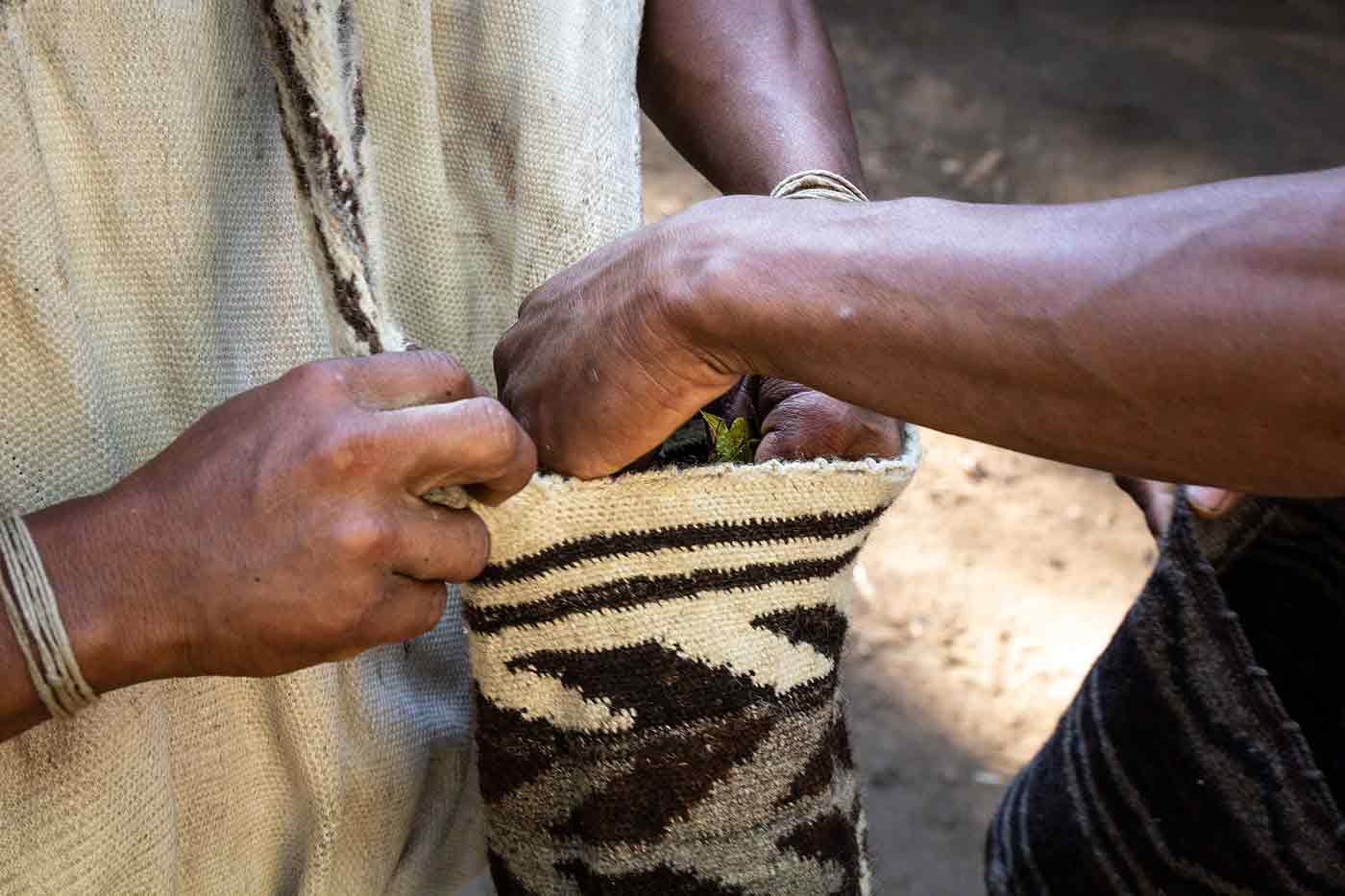
Snapshots from Everyday Arhuaco Life
Every Arhuaco carries with him a small vessel (poporo) which contains lime from powdered seashells. Usually they use a little stick to stir and toss it and eat the lime, which is supposed to have a calming effect. In the picture, the Arhuaco is in the process of filling the vessel.
Snapshots from Everyday Arhuaco Life
Every Arhuaco carries with him a small vessel (poporo) which contains lime from powdered seashells. Usually they use a little stick to stir and toss it and eat the lime, which is supposed to have a calming effect. In the picture, the Arhuaco is in the process of filling the vessel.
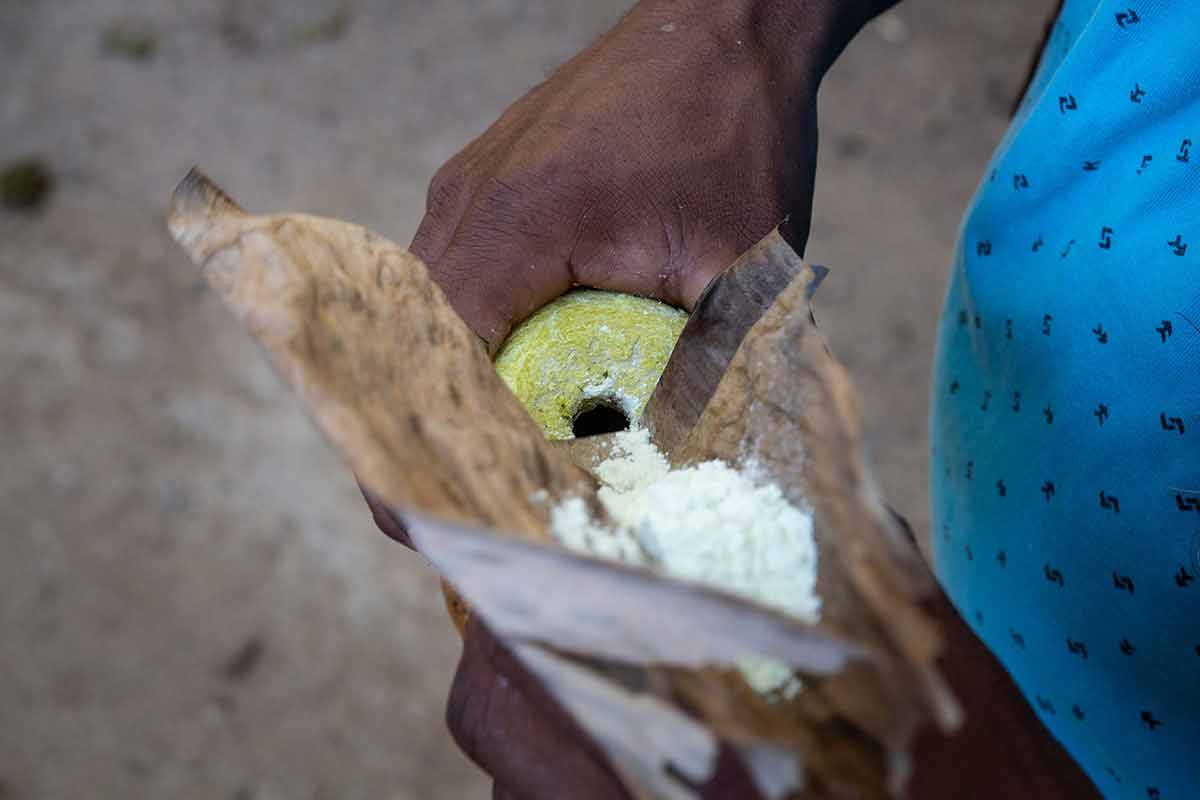
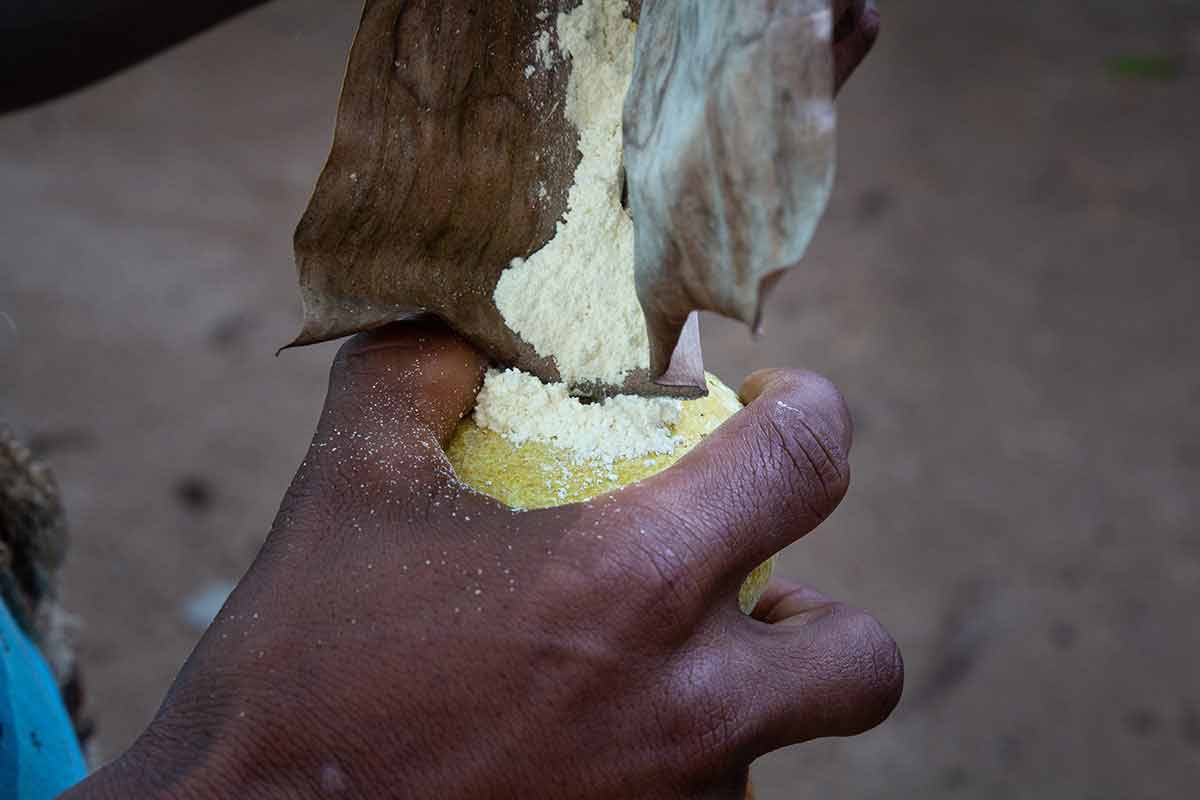
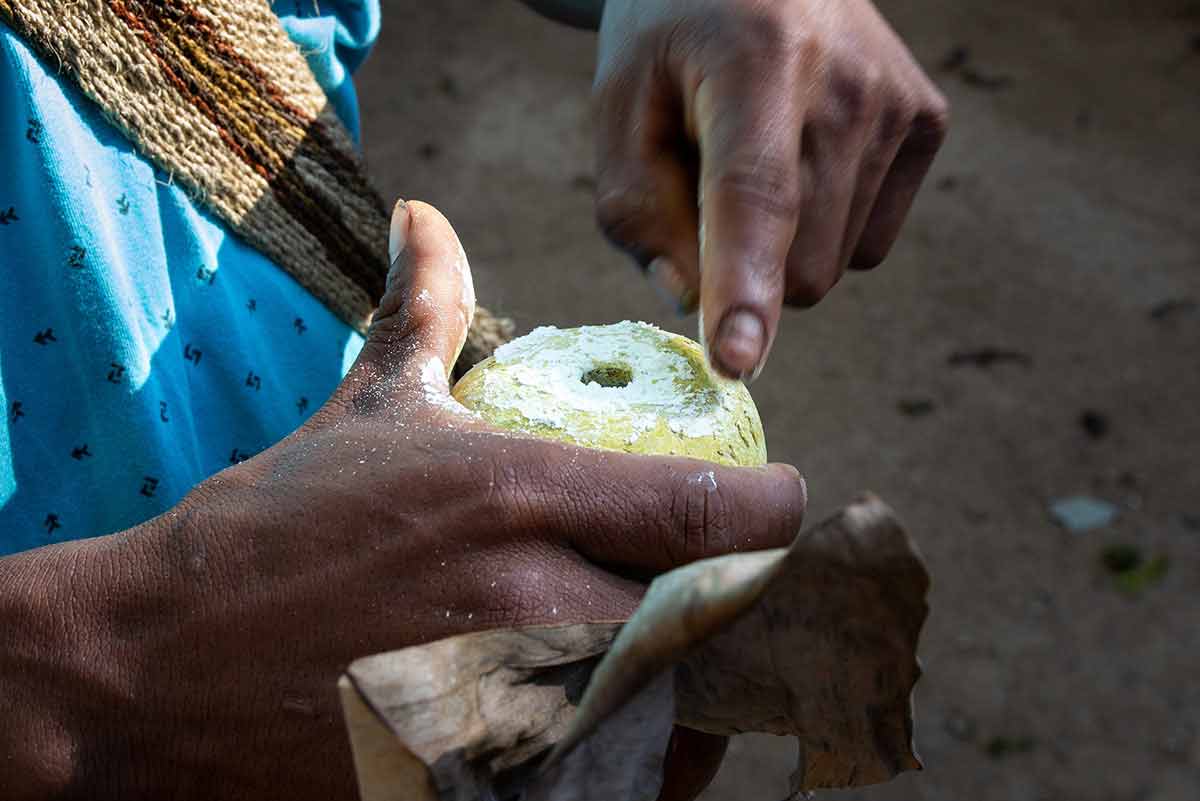
When there is some time, the grandmother crochets the typical mochilas. Always surrounded by at least three kids, it sometimes was a challenge to capture the scene – not to mention to crochet!
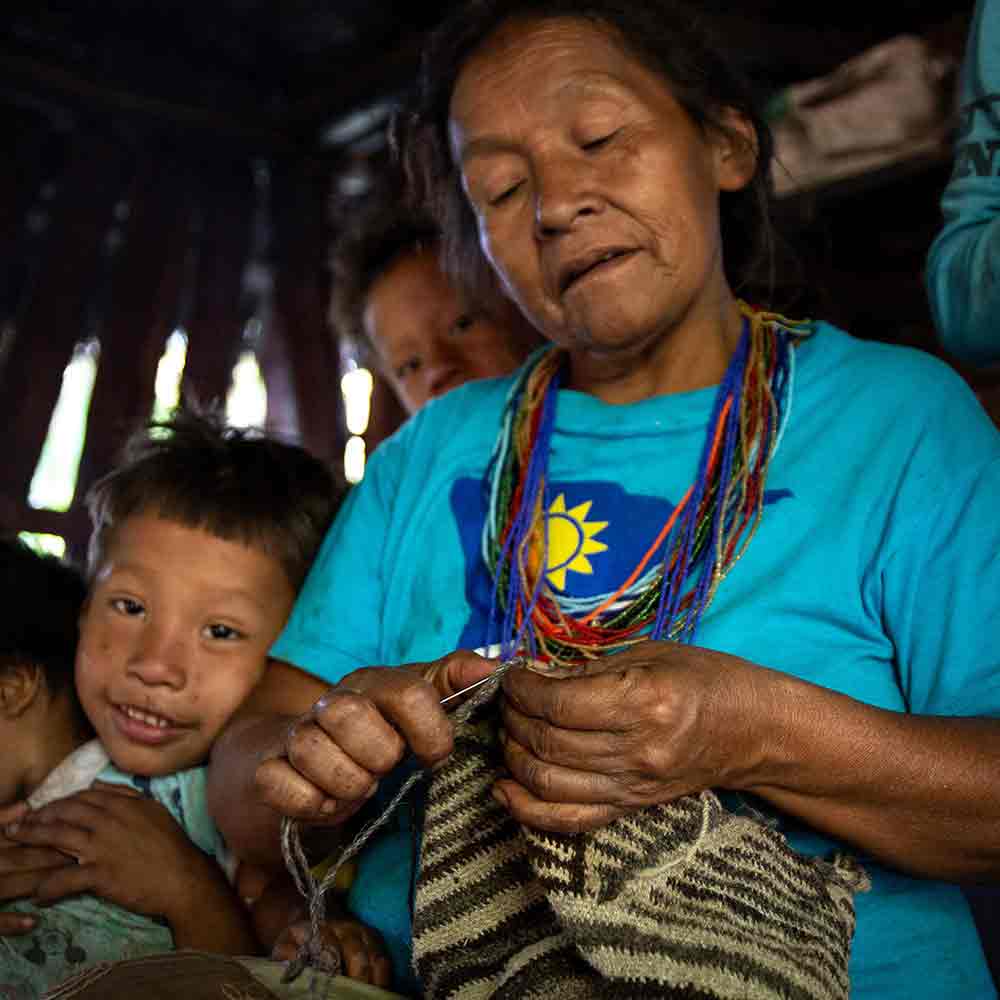
‘Take another picture of us’. Ok, here we go!
These kids couldn’t get enough – after each shutter sound of the camera, they ran towards me to see the photo. It was a lot of fun.
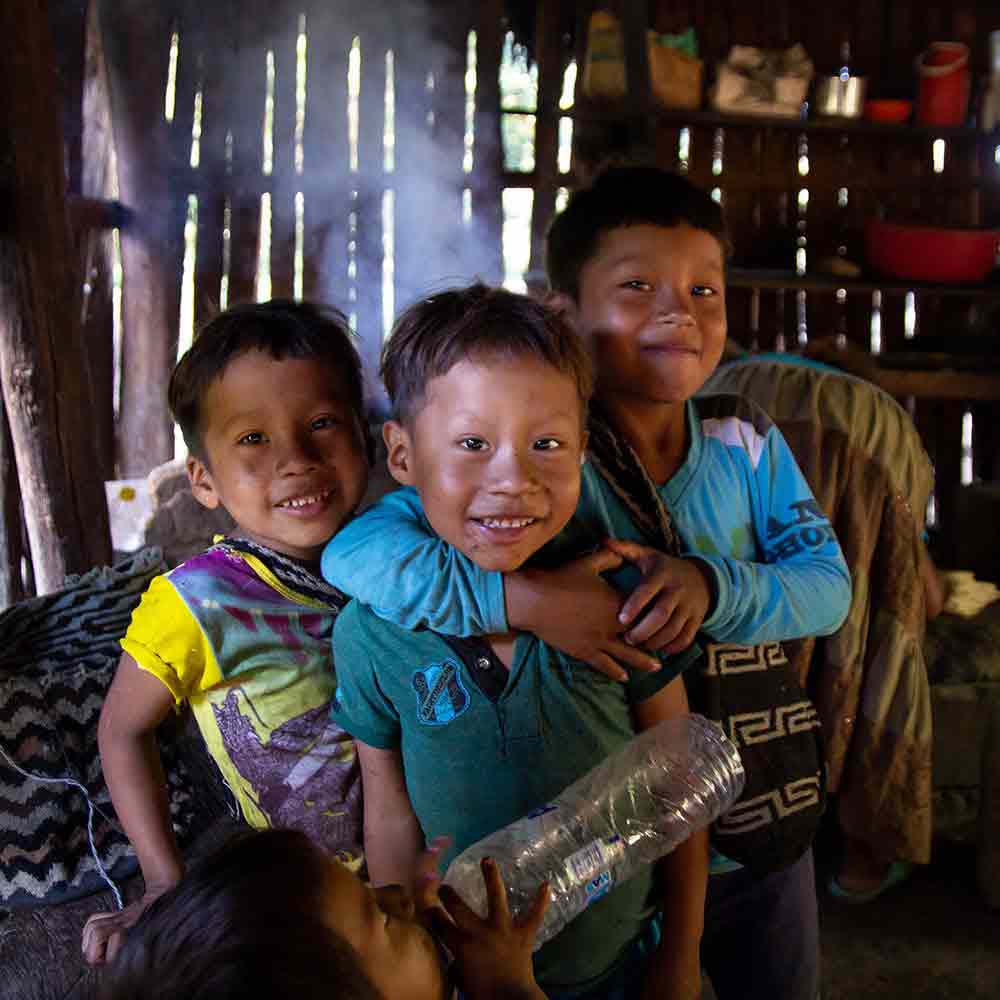
A young Arhuaco kid heard some unusual sounds – and takes a quick glance out of the hut to check if everything is okay.
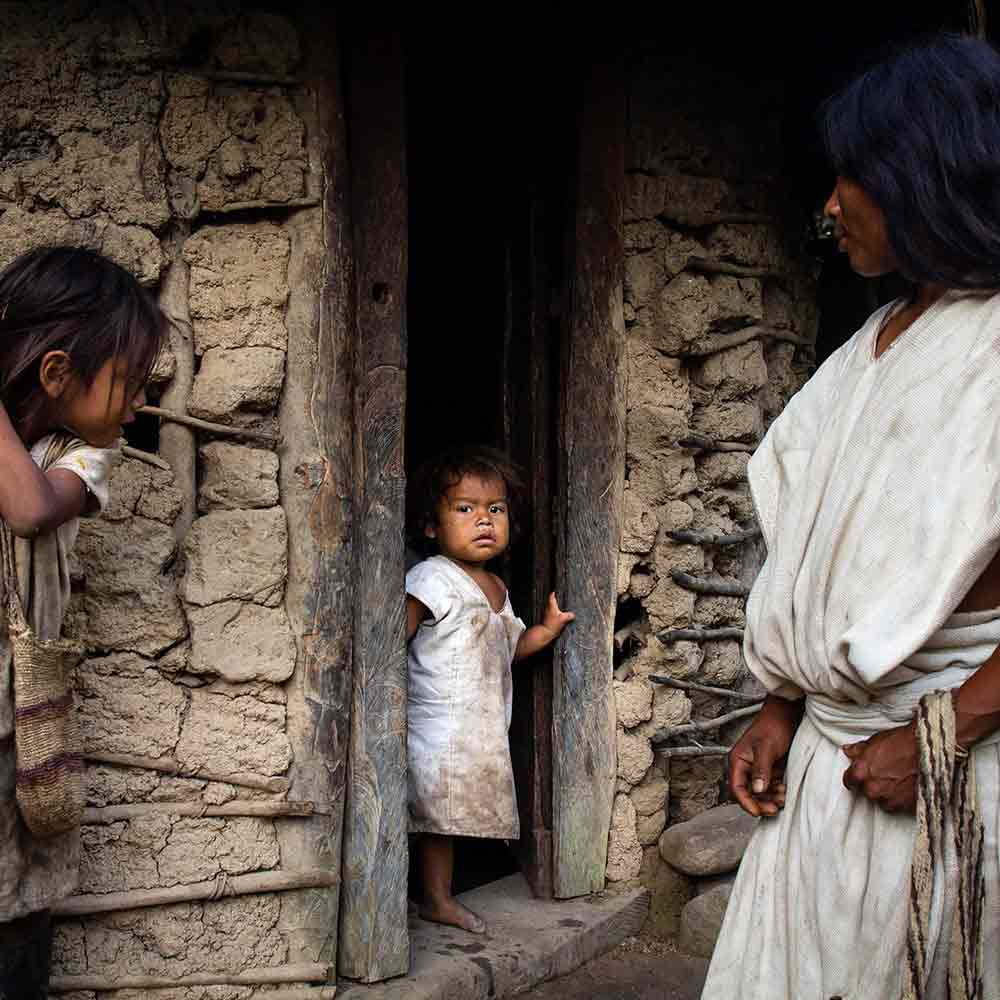
The Atmosphere in the Sierra Nevada
It was not easy to get access to that part of the Sierra Nevada: I talked to several people and weighed different options, and after a period of waiting, I was able to enter the space officially as blogger and I had the permission of the ‘mamo’, an enlightened spiritual leader, to take pictures.
It is incredibly difficult to describe the atmosphere in the Sierra Nevada – of course, my visit there was an educational and informative one because it is experiences like these that make you realize how much you do not know about a country even if you have been there a few times and speak the language. For me it was indeed like getting an impression of what the ‘heart of the word’ could be like: the fairy tale-like, otherworldly beauty of the valleys, the quietude and unspoiled nature, the peace… And first and foremost the colors: it is one thing to take a beautiful high-resolution photograph but in a setting like this, you know in the very moment in which you’re taking out your camera that this will be only a rather bleak copy. In the Sierra Nevada, the colors talk to you! Spending time there fed me with a never-ending curiosity to want to see what would come next, what the next mountain would look like and what would be seen from there. Each look into the distance was another glimpse of surreal wonder.
The Atmosphere in the Sierra Nevada
It was not easy to get access to that part of the Sierra Nevada: I talked to several people and weighed different options, and after a period of waiting, I was able to enter the space officially as blogger and I had the permission of the ‘mamo’, an enlightened spiritual leader, to take pictures.
It is incredibly difficult to describe the atmosphere in the Sierra Nevada – of course, my visit there was an educational and informative one because it is experiences like these that make you realize how much you do not know about a country even if you have been there a few times and speak the language. For me it was indeed like getting an impression of what the ‘heart of the word’ could be like: the fairy tale-like, otherworldly beauty of the valleys, the quietude and unspoiled nature, the peace… And first and foremost the colors: it is one thing to take a beautiful high-resolution photograph but in a setting like this, you know in the very moment in which you’re taking out your camera that this will be only a rather bleak copy. In the Sierra Nevada, the colors talk to you! Spending time there fed me with a never-ending curiosity to want to see what would come next, what the next mountain would look like and what would be seen from there. Each look into the distance was another glimpse of surreal wonder.
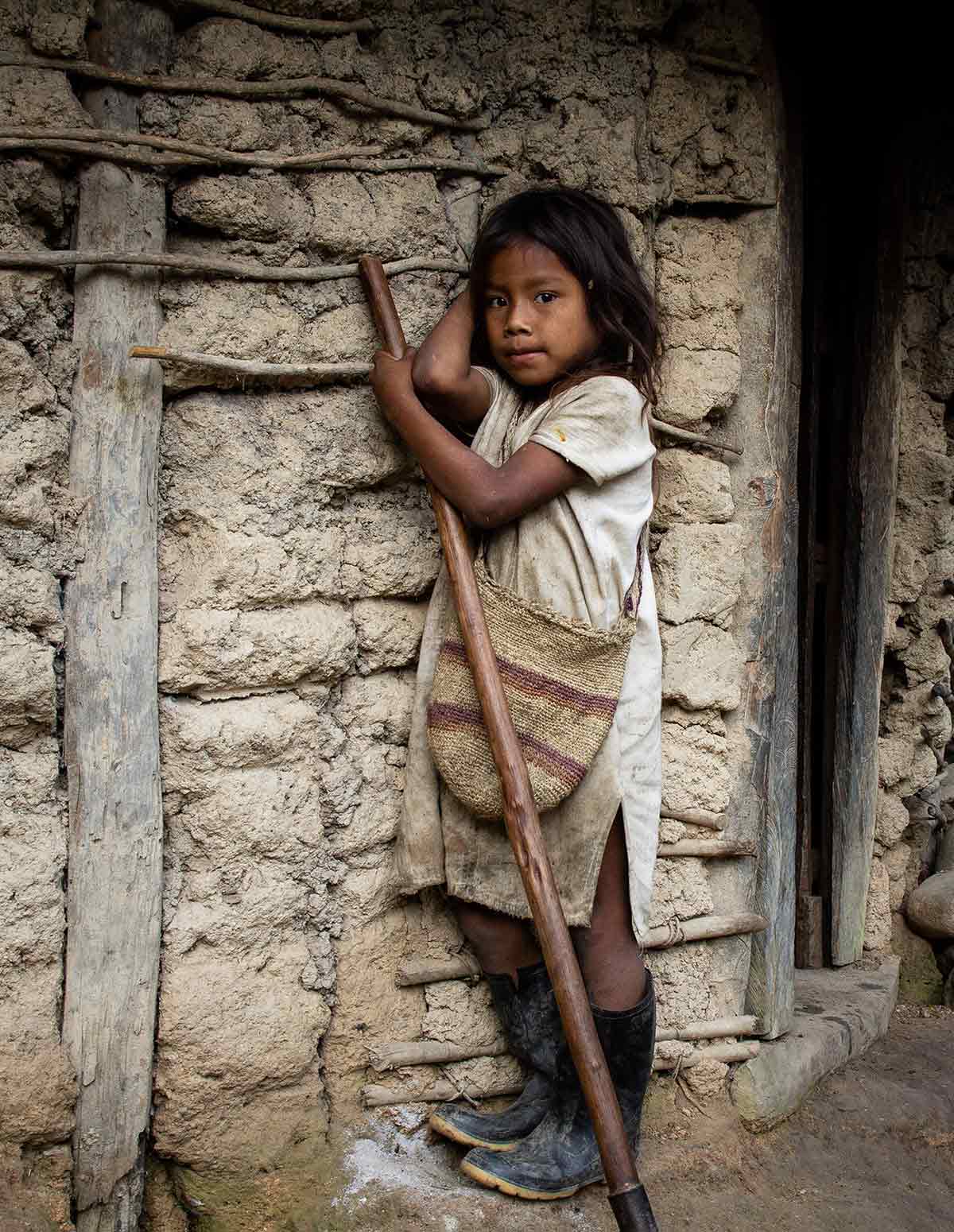
Working in the Sierra Nevada
It was an honor and a great experience to travel through a part of Colombia which only very few hermanos menores have ever entered. The idea is to share my photos with the Arhuaco people on this blog. With a better documentation of their daily lifes and coffee cultivation, when their customers get a better insight of this unique place on earth, they hopefully are able to negotiate better prices for the coffee they cultivate and export.
I did this trip and this blogpost at my own expense.
With the income of the sold coffee, the Arhuaco people are able to build and service schools for the younger generation – located on the outer border of the protected area. I visited one of those construction sites – it looked like a sustainable project.
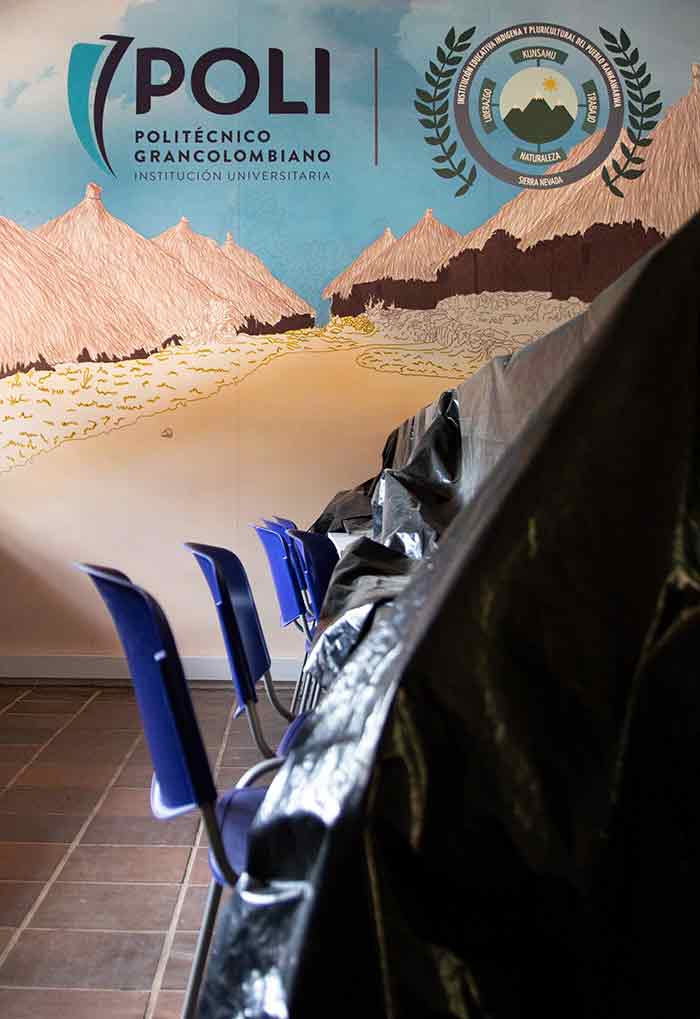
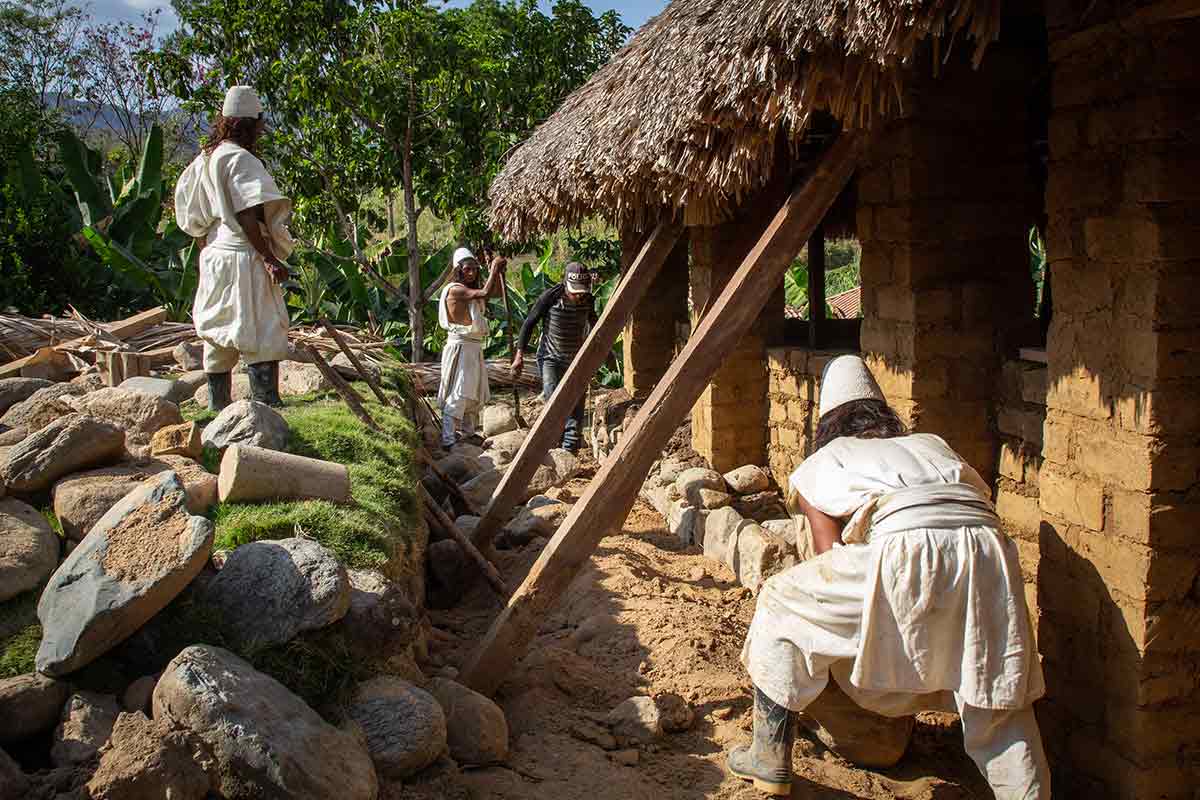
Even though I spent 3.5 days in the Sierra Nevada – 1.5 days were spent hiking – I only saw a tiny fragment of the entire region. In order to get to the mountain top, one needs at least 7–10 days and only then does one see the truly remote places. Hard to believe – while I was there, I couldn’t help my amazement on seeing, smelling, and listening to the beautiful landscape and fauna. Especially knowing that the trees had been there for thousands of years left quite an impact.
The people I talked to struck me as modest and proud. Living in such a respectful symbiosis with nature has an effect on one’s character: the Arhuaco are incredibly balanced. At first, somewhat distanced and skeptical, then meeting me with increased interest and hospitality. Open hearts at the heart of the world – it takes some adjustment to get back to cities like Berlin after such a trip. Entering the Arhuacos’ world is like opening a book of wonder, or drinking a sip of such a fragrant coffee that it will stay with you forever, even long after it is gone and you’re back to business.
Even though I spent 3.5 days in the Sierra Nevada – 1.5 days were spent hiking – I only saw a tiny fragment of the entire region. In order to get to the mountain top, one needs at least 7–10 days and only then does one see the truly remote places. Hard to believe – while I was there, I couldn’t help my amazement on seeing, smelling, and listening to the beautiful landscape and fauna. Especially knowing that the trees had been there for thousands of years left quite an impact.
The people I talked to struck me as modest and proud. Living in such a respectful symbiosis with nature has an effect on one’s character: the Arhuaco are incredibly balanced. At first, somewhat distanced and skeptical, then meeting me with increased interest and hospitality. Open hearts at the heart of the world – it takes some adjustment to get back to cities like Berlin after such a trip. Entering the Arhuacos’ world is like opening a book of wonder, or drinking a sip of such a fragrant coffee that it will stay with you forever, even long after it is gone and you’re back to business.
The Arhuaco
Chapter 2: Coffee from Another Universe
The Arhuaco
Chapter 2:
Coffee from Another Univers
All photos are copyright by Matthias Stäheli.
Thanks to my Berlin collective KUKUKK for the support.

*Some Arhuacos in the photos wear our cheap clothes only because their traditional clothes are time-consuming to produce and get dirty while working in the fields or while playing on the ground.
Other CafCaf Stories:
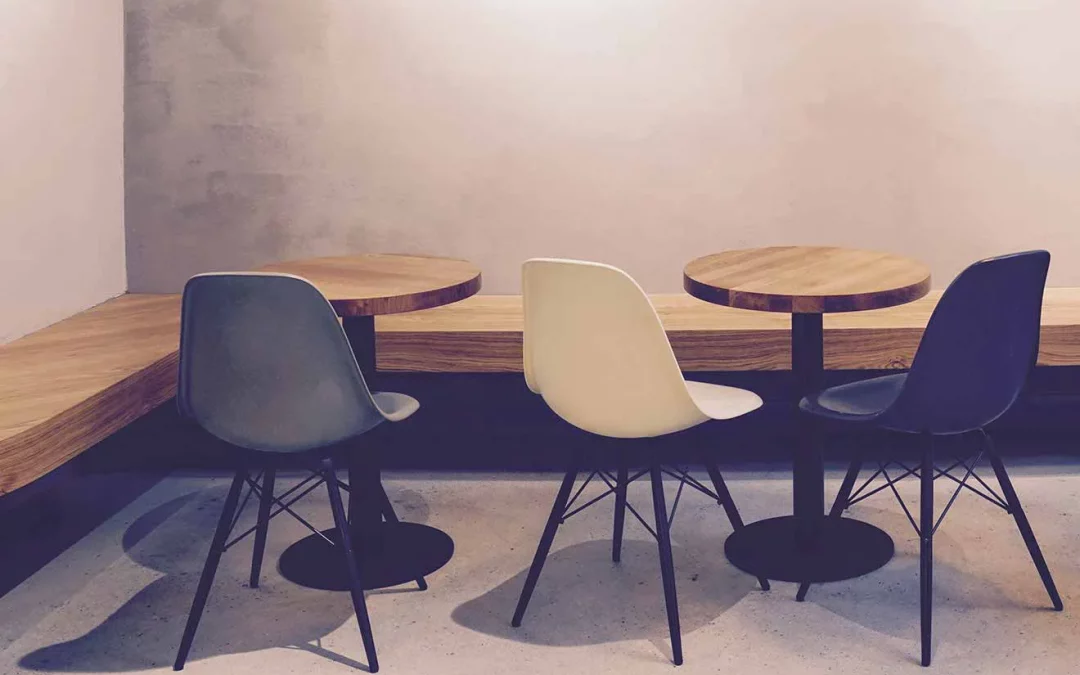
Building a coffee shop (EN)
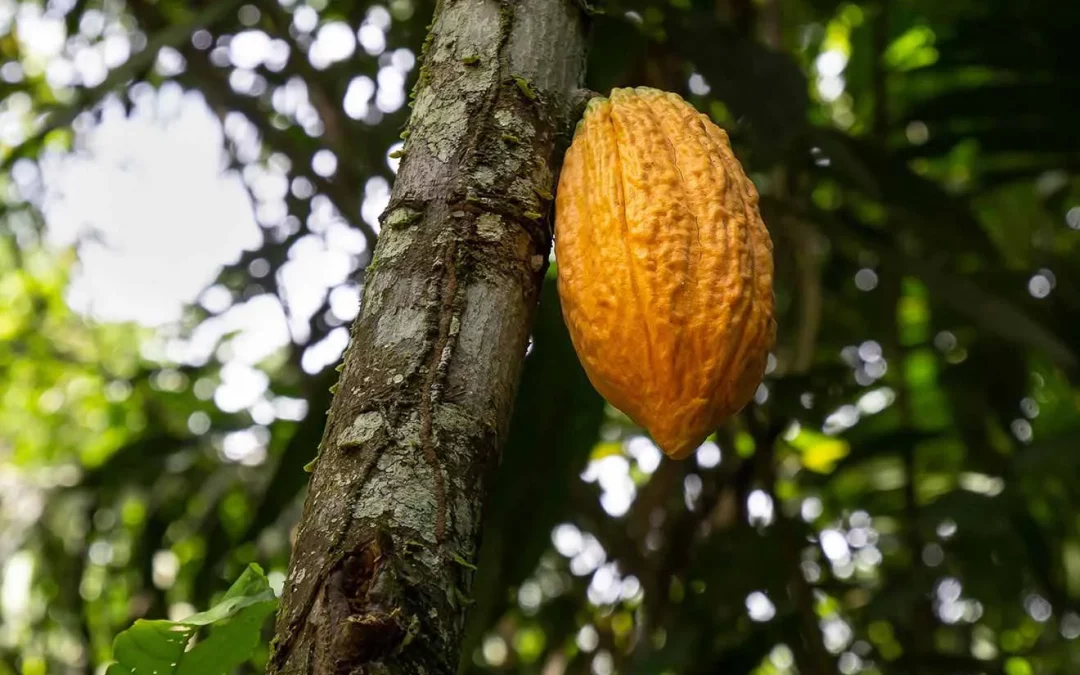
Cacao talks (EN)
Read the interview!
